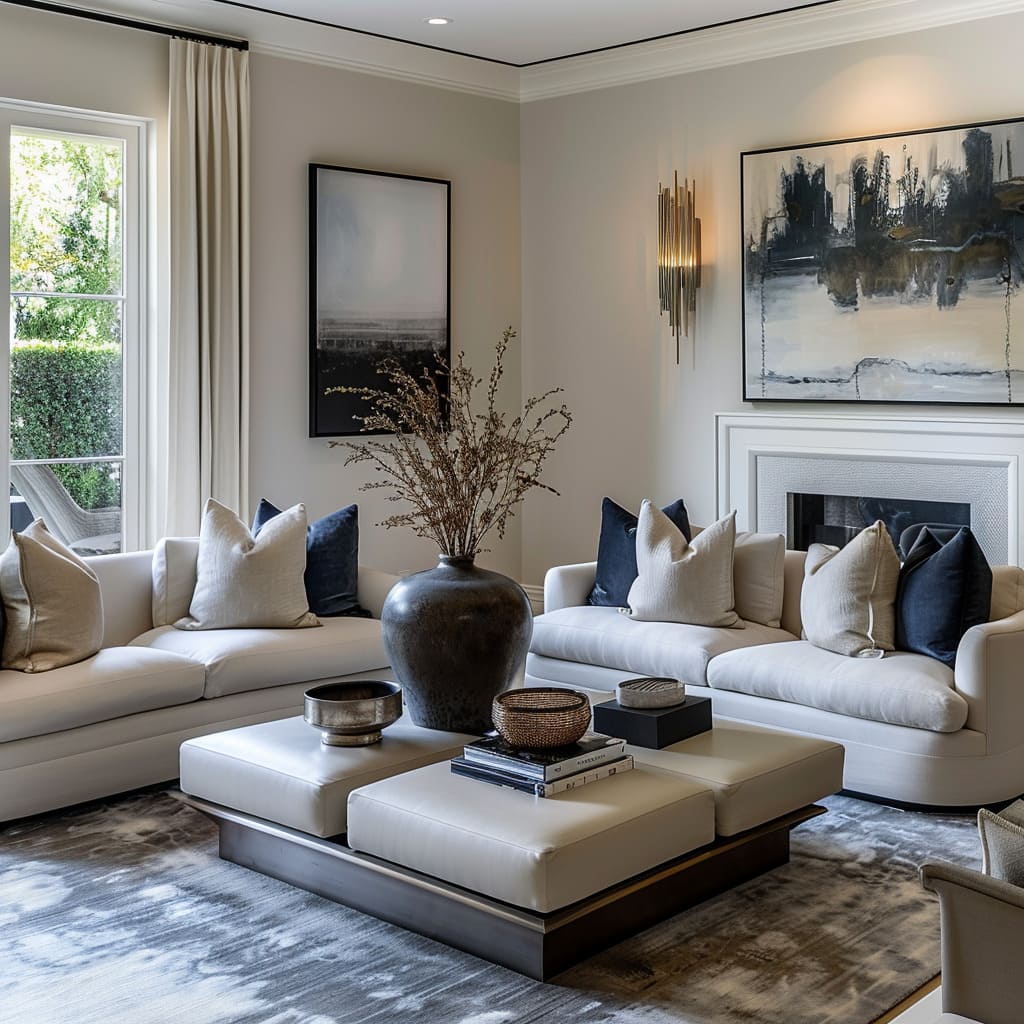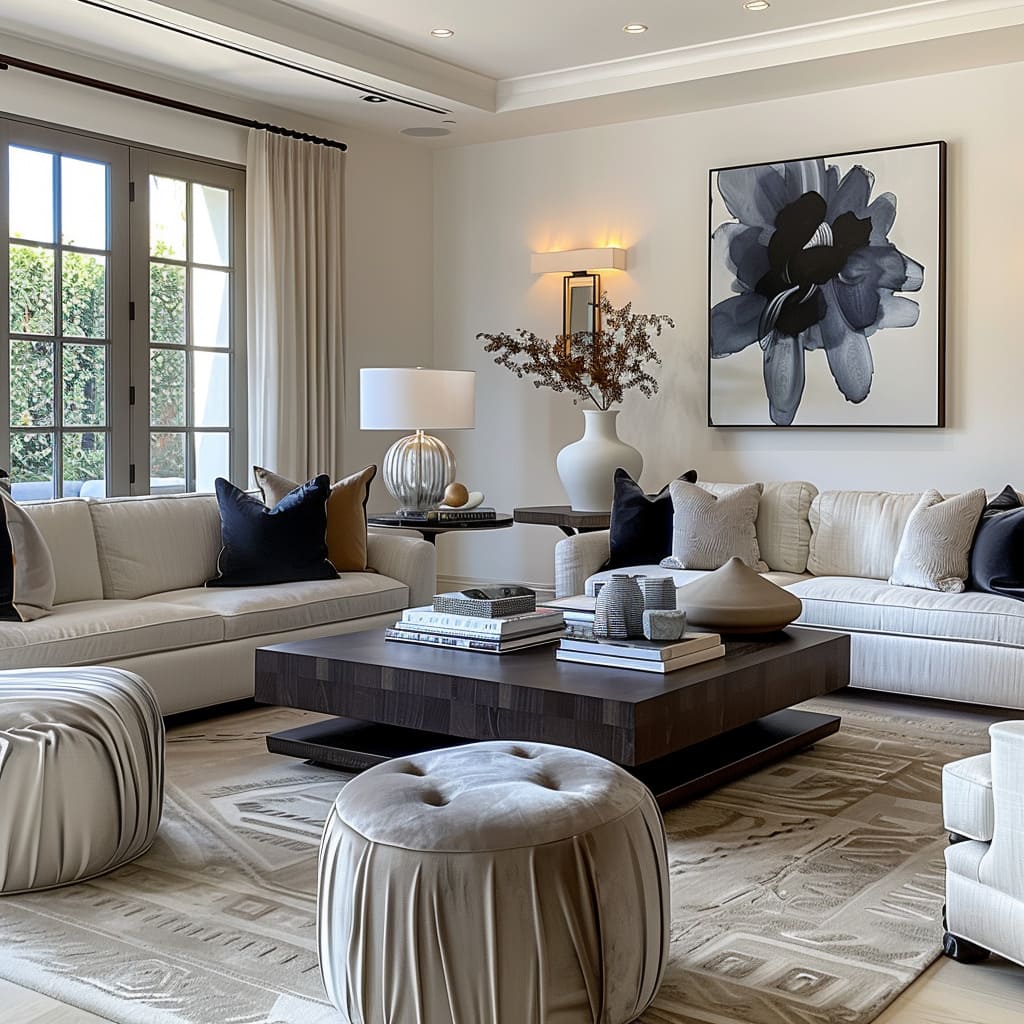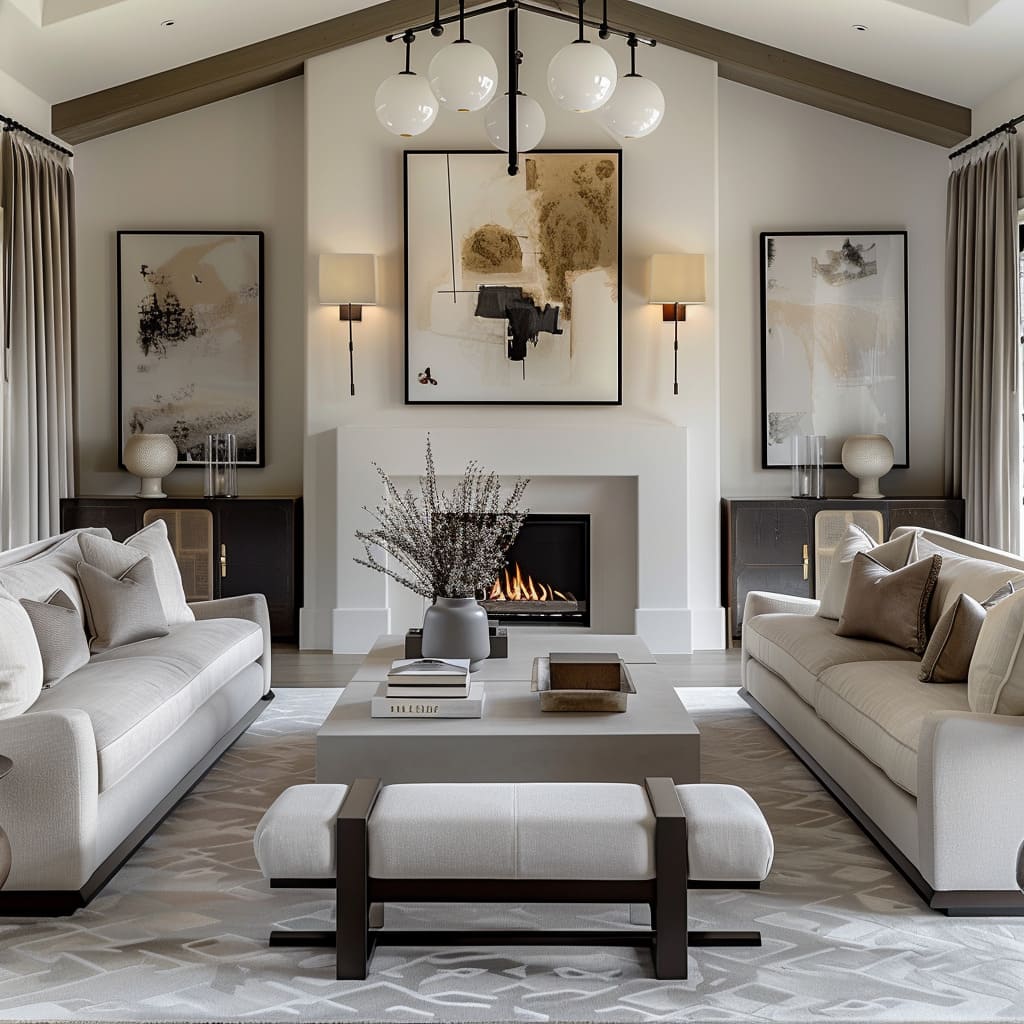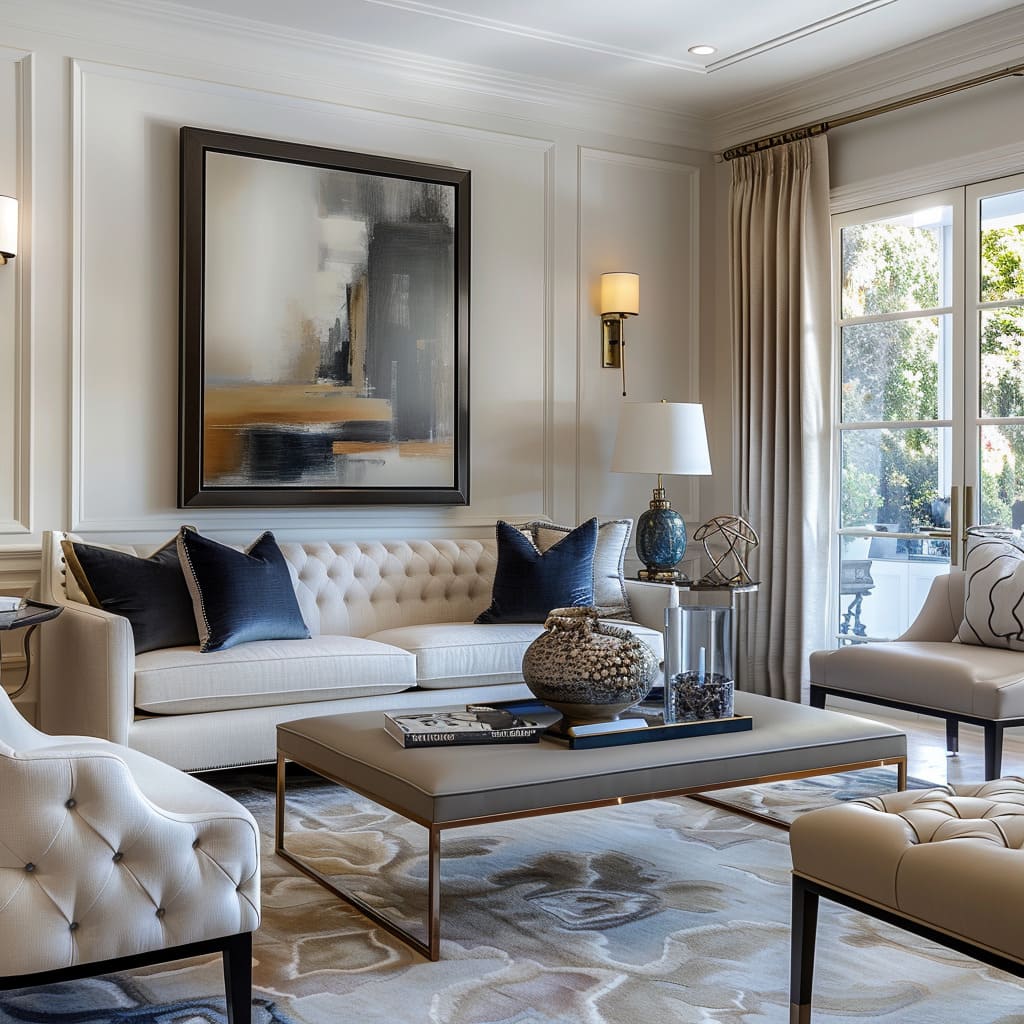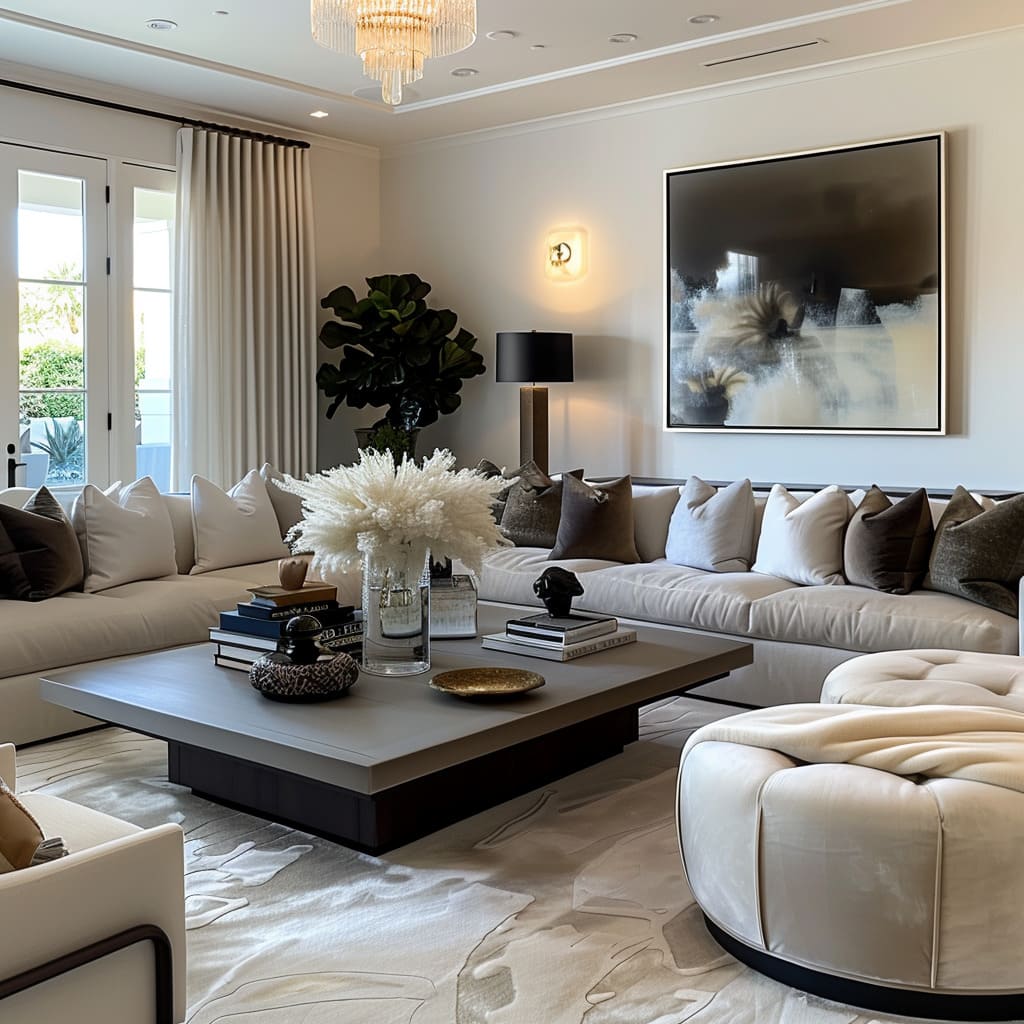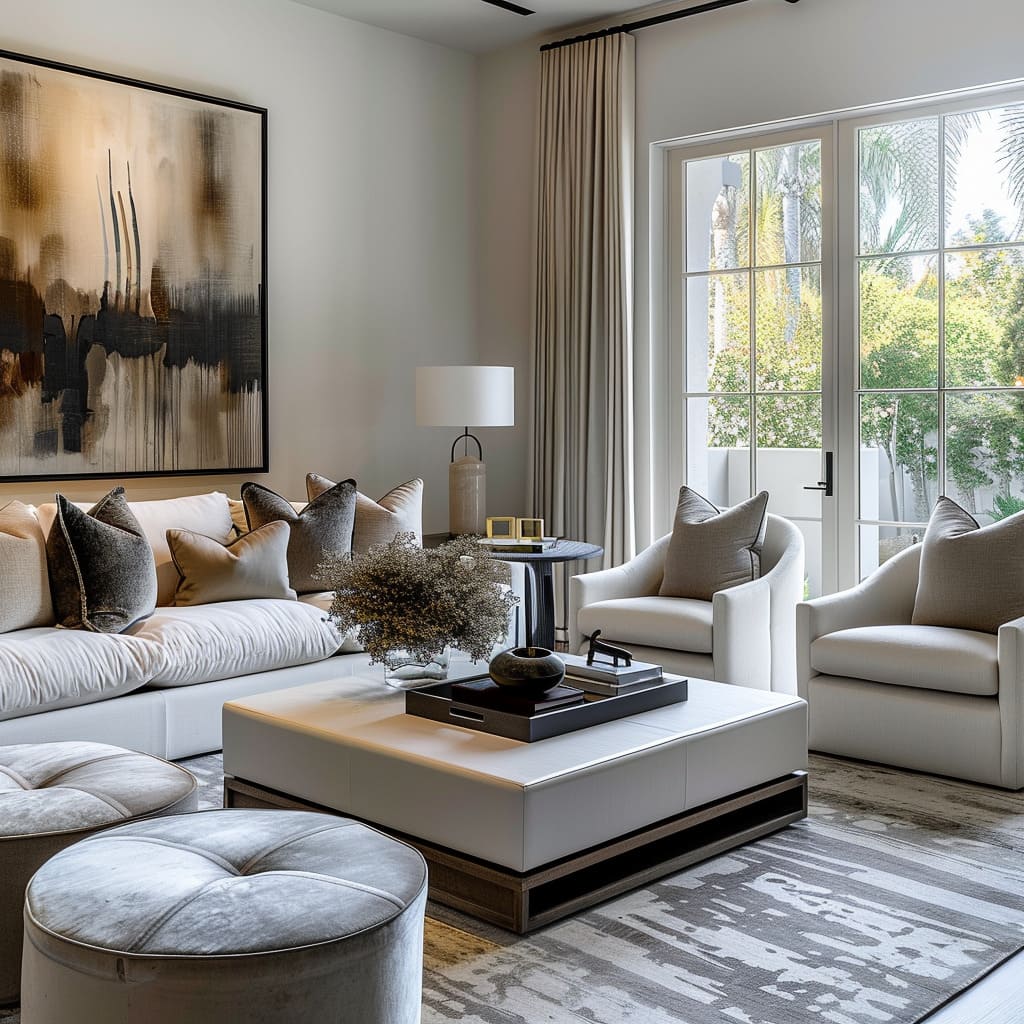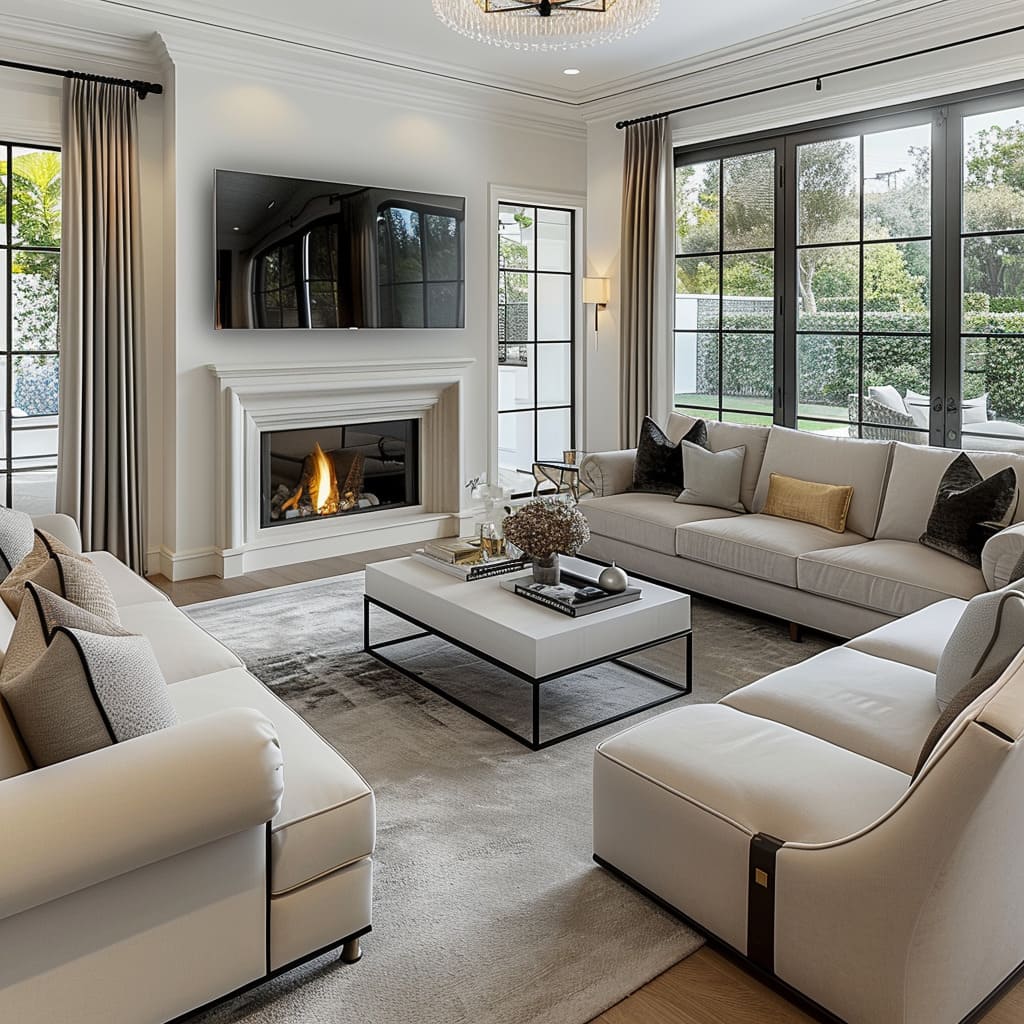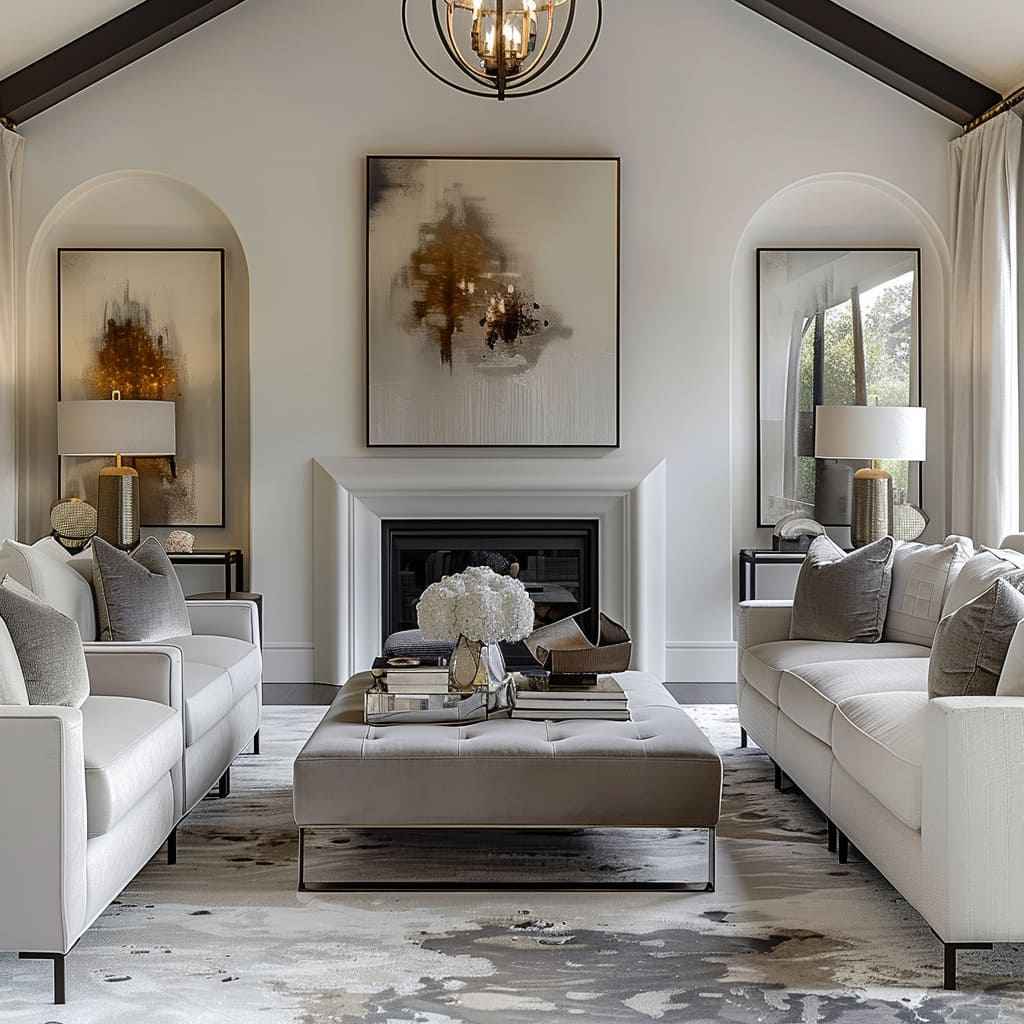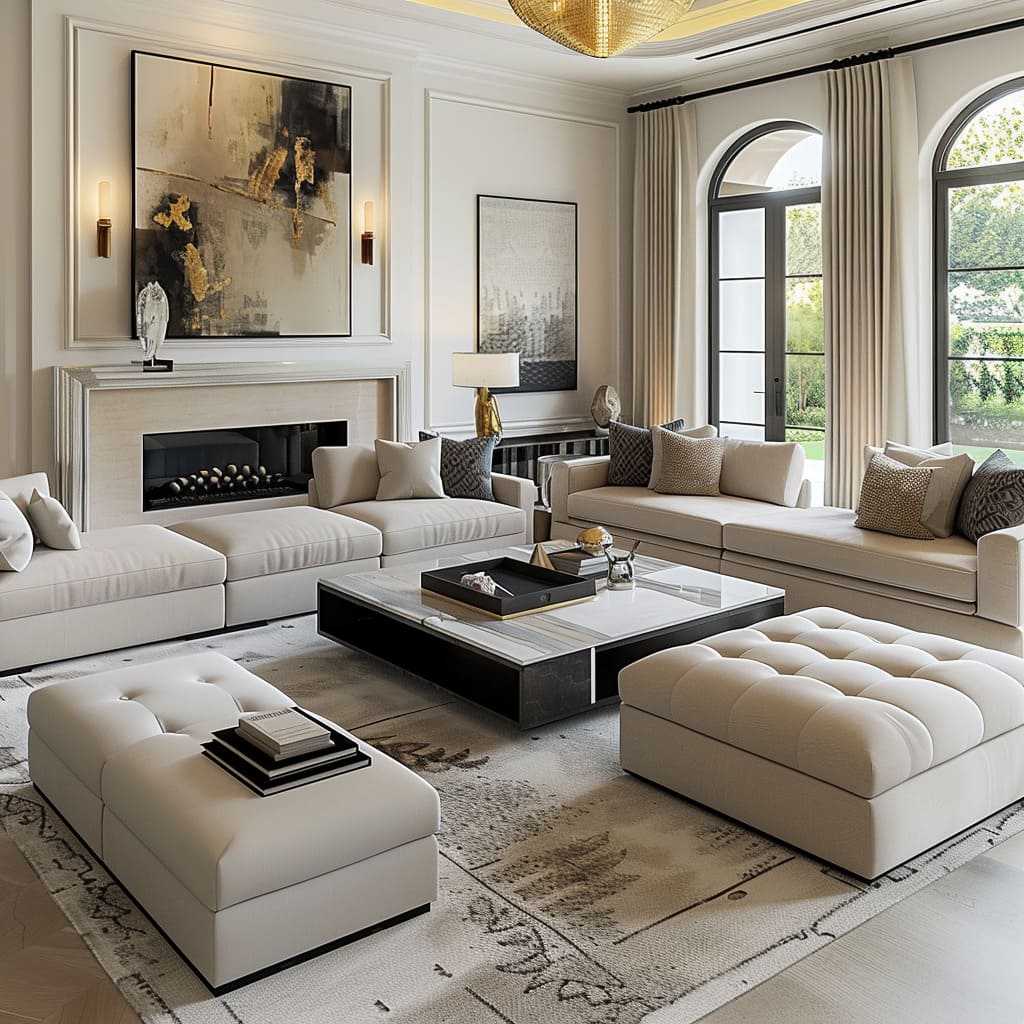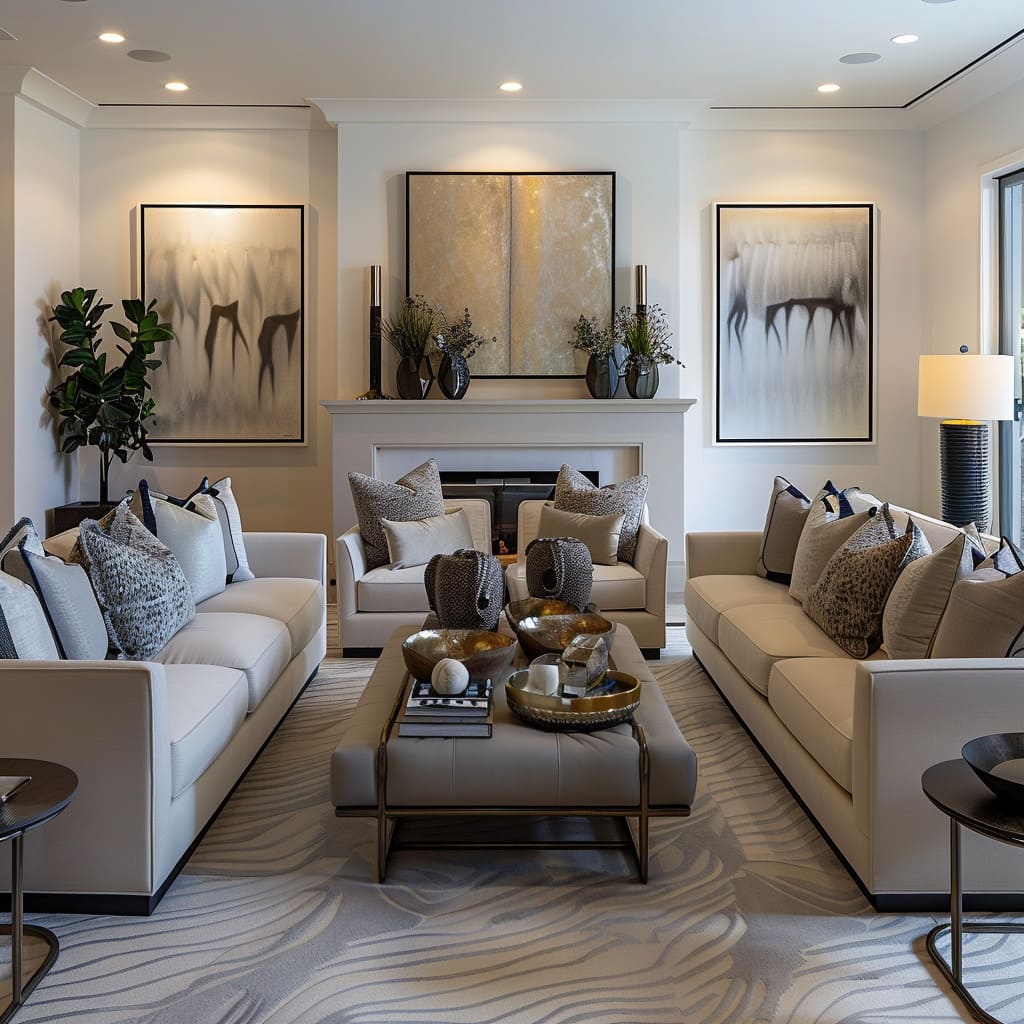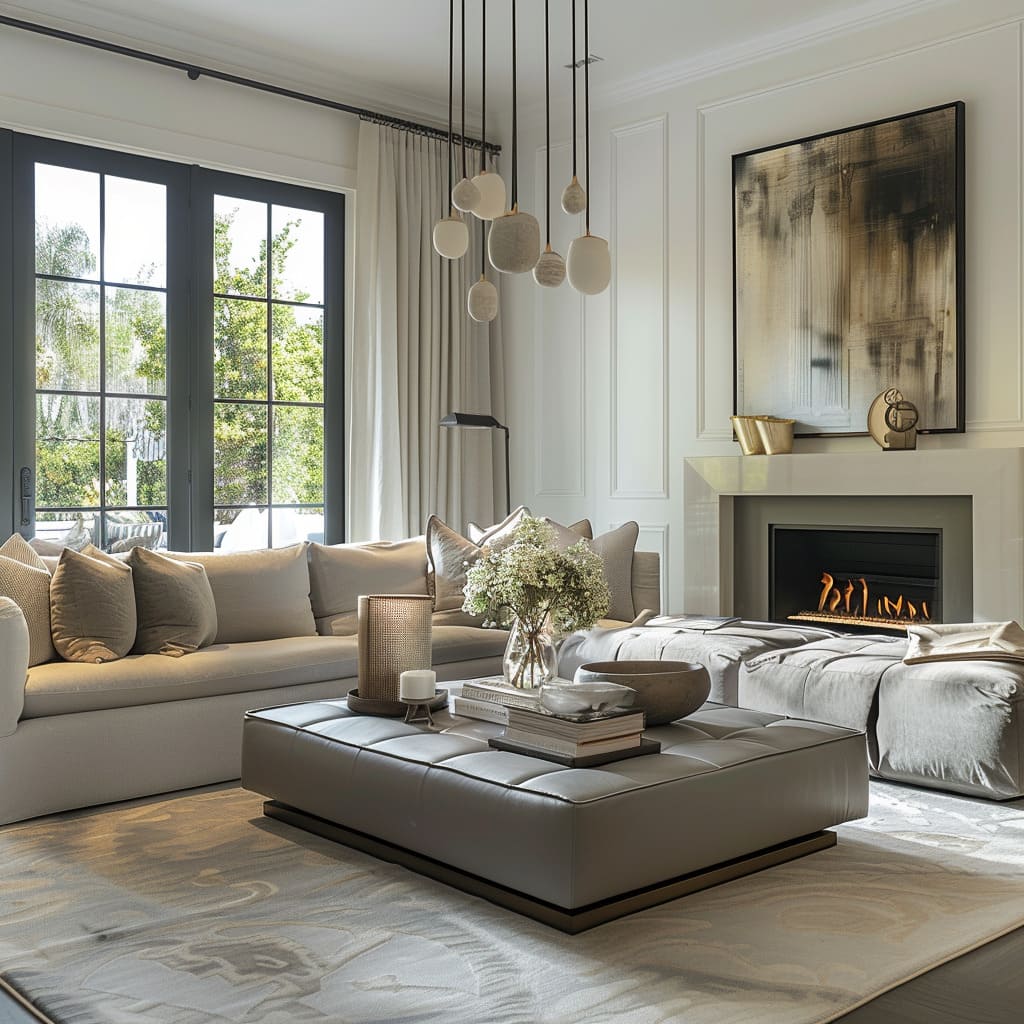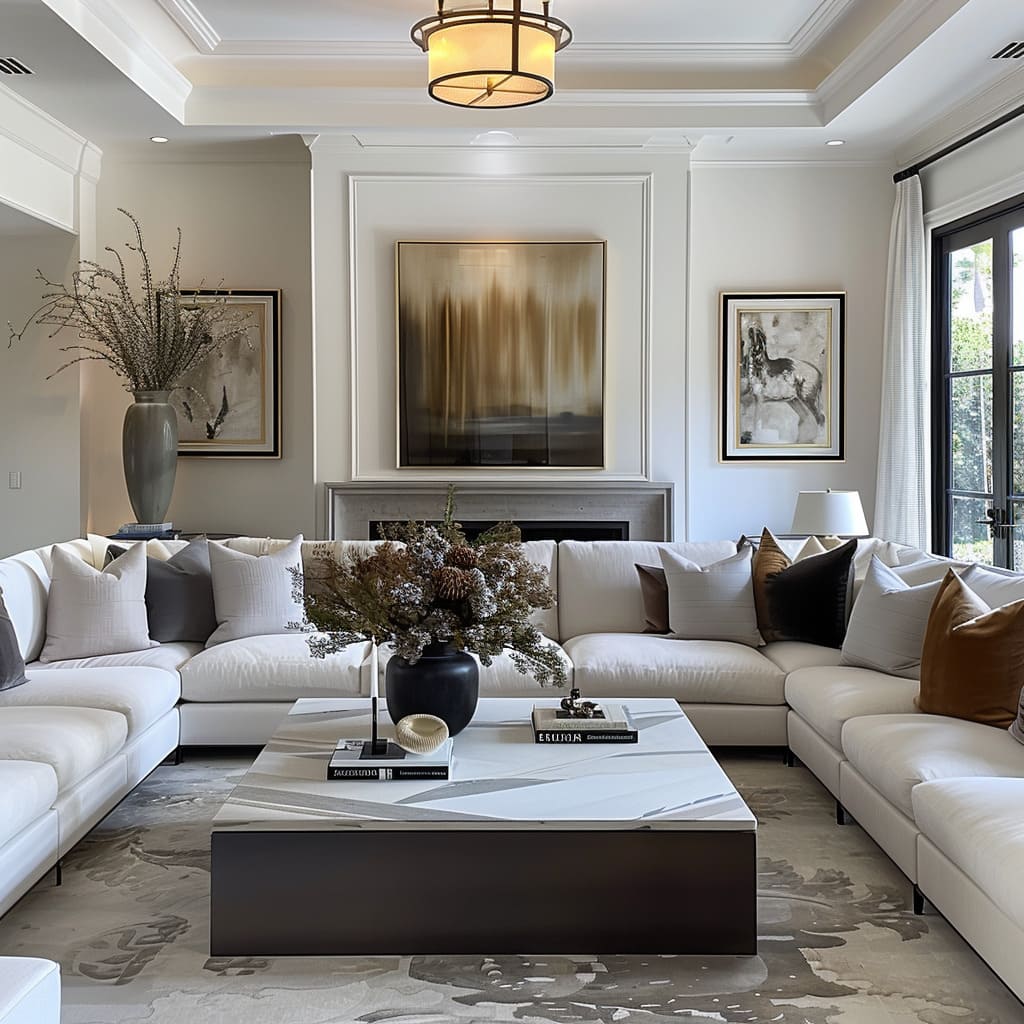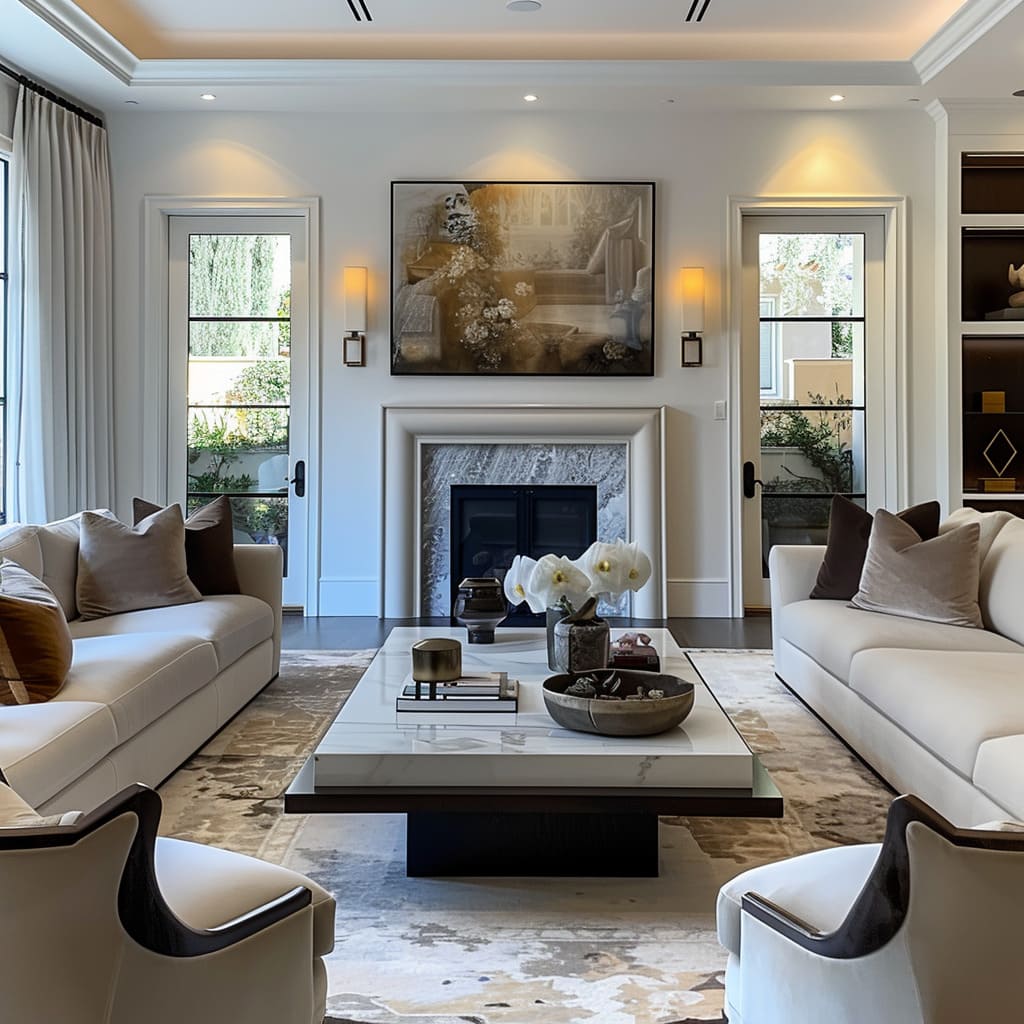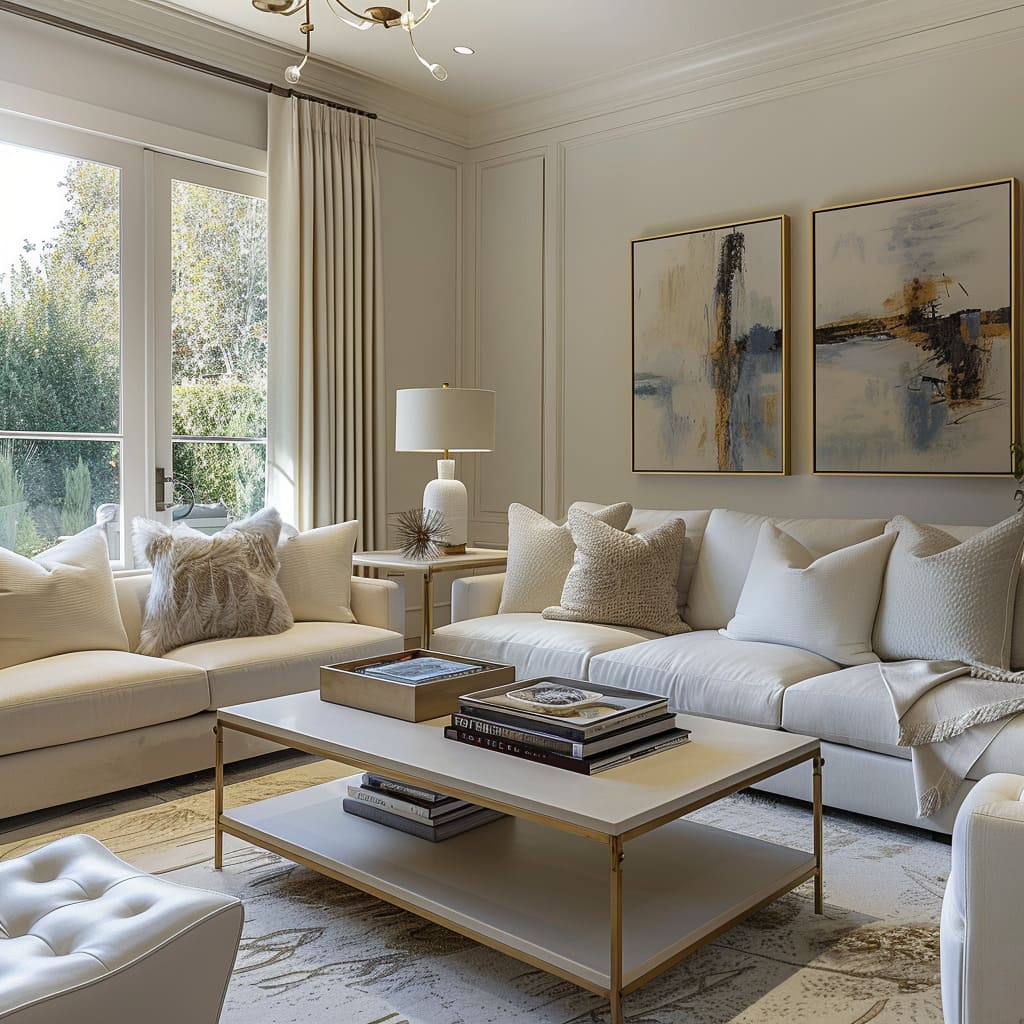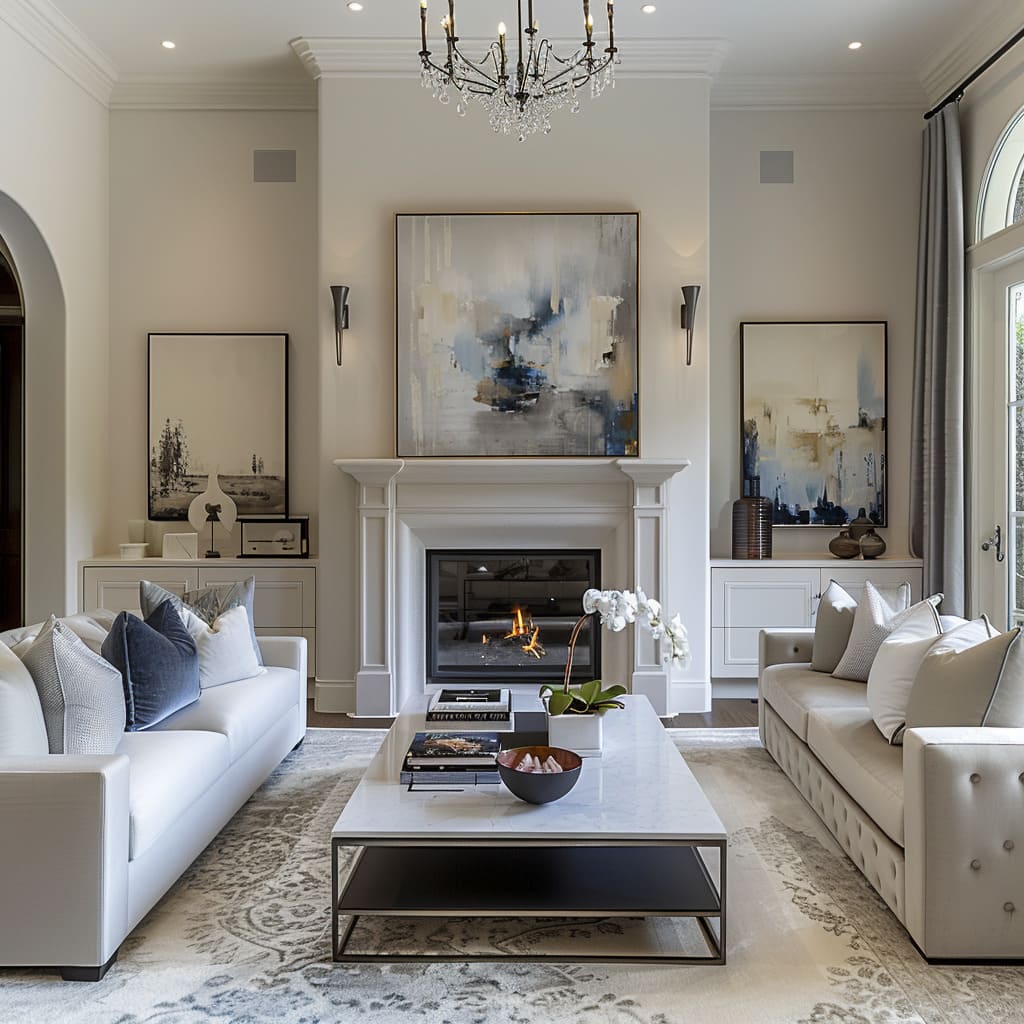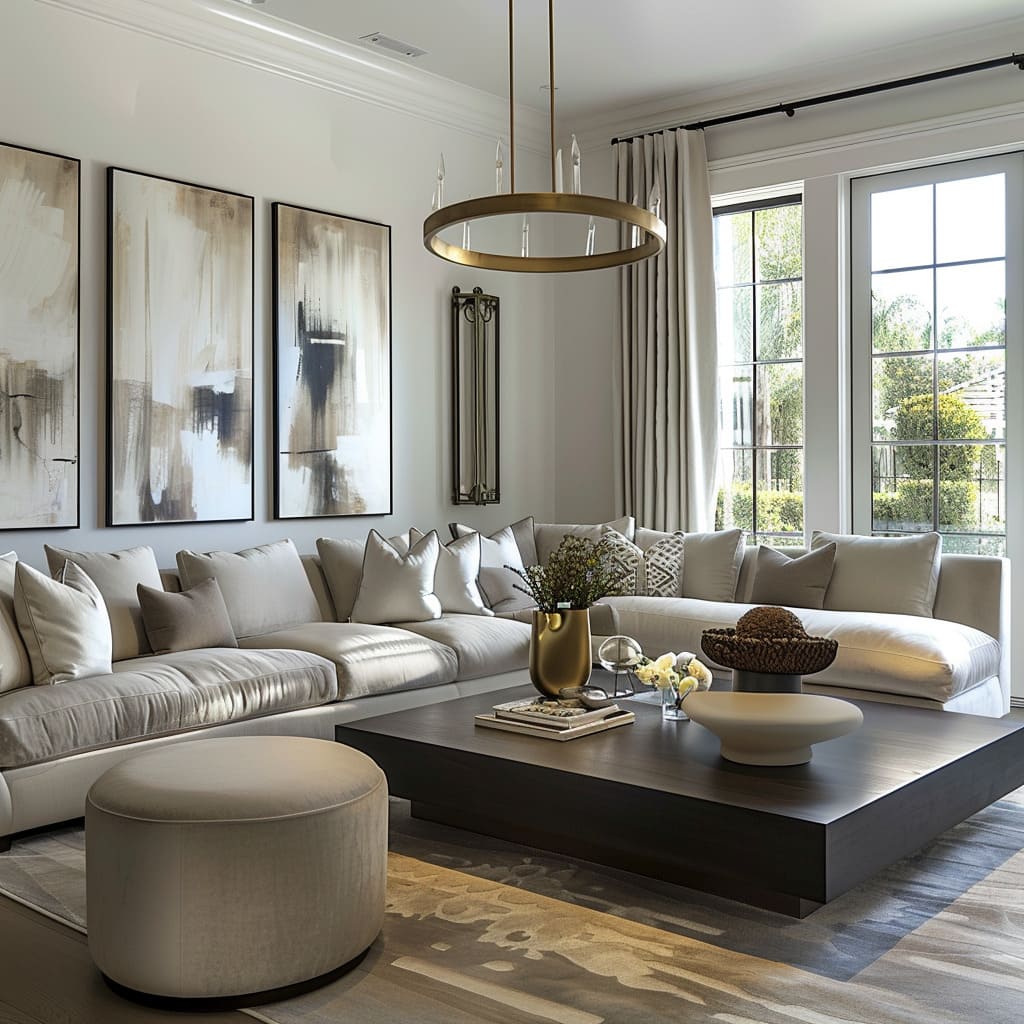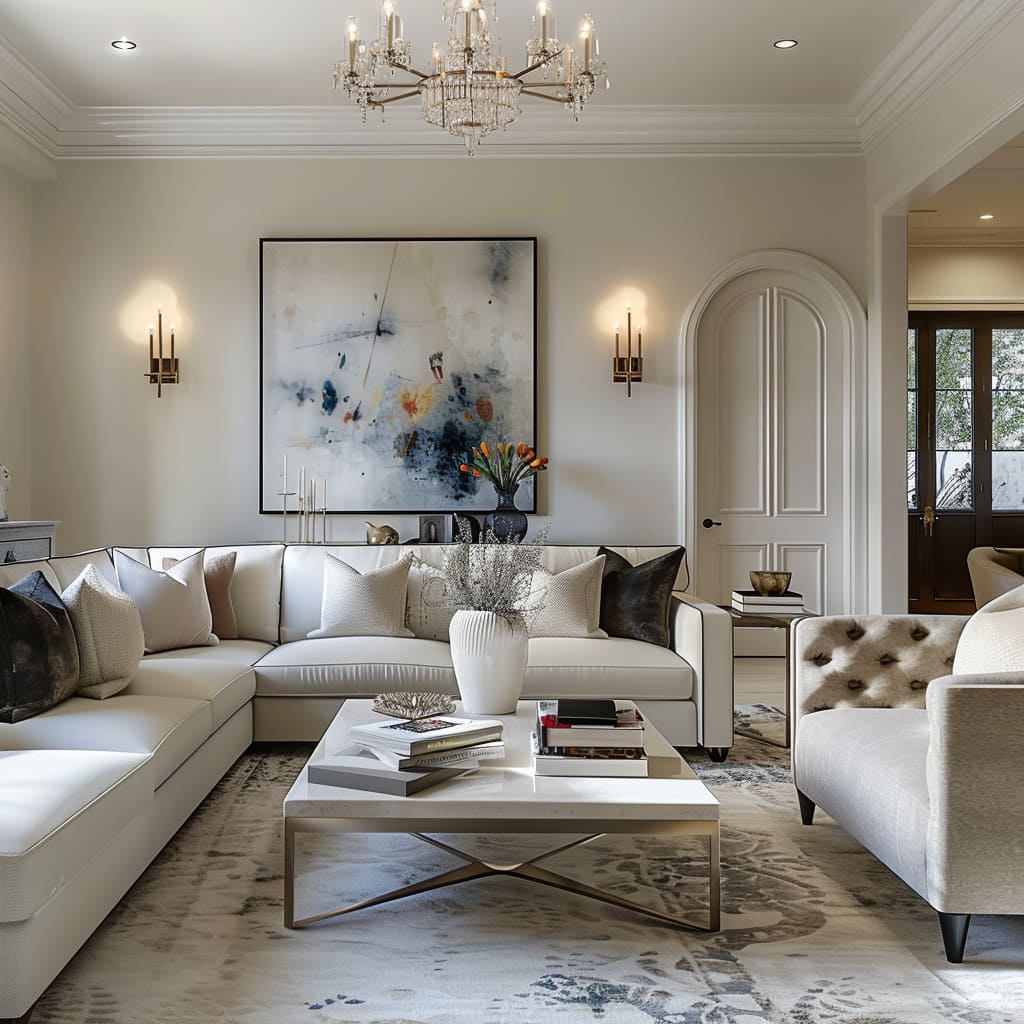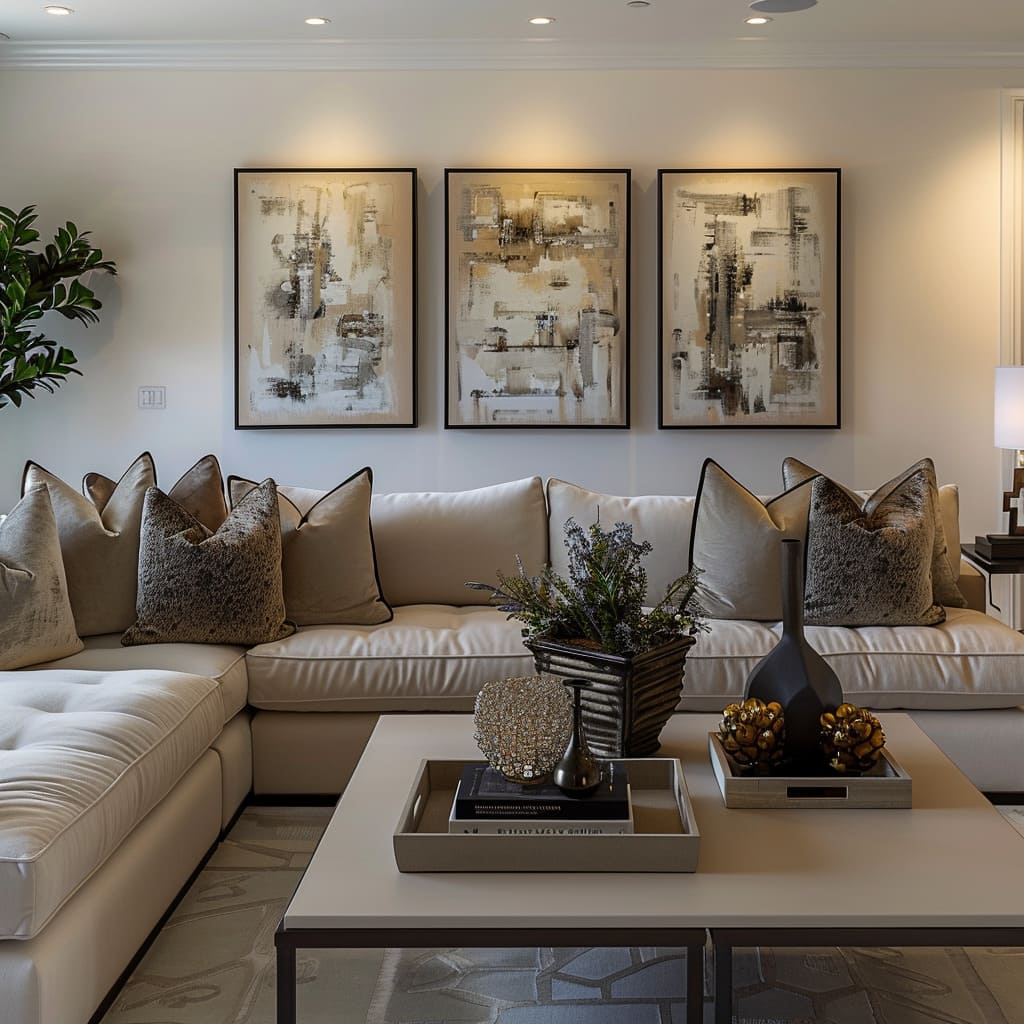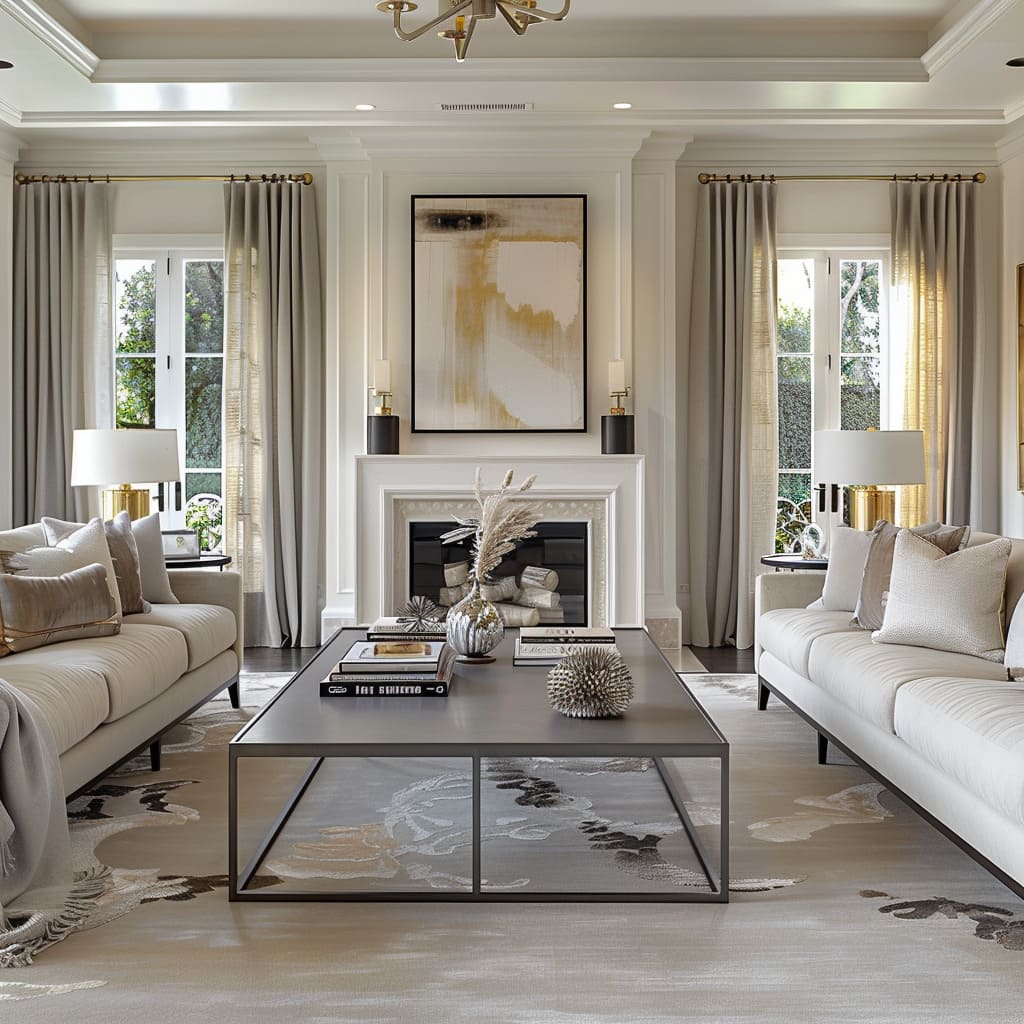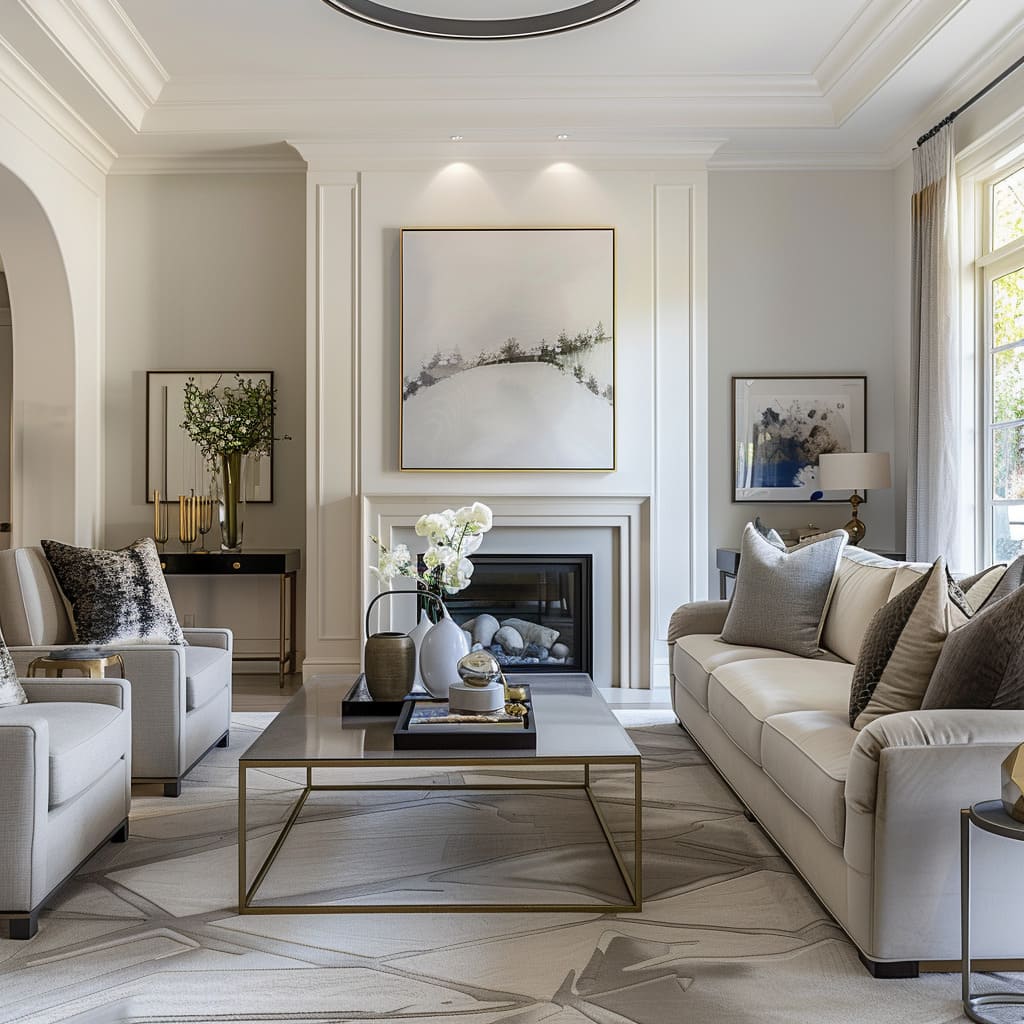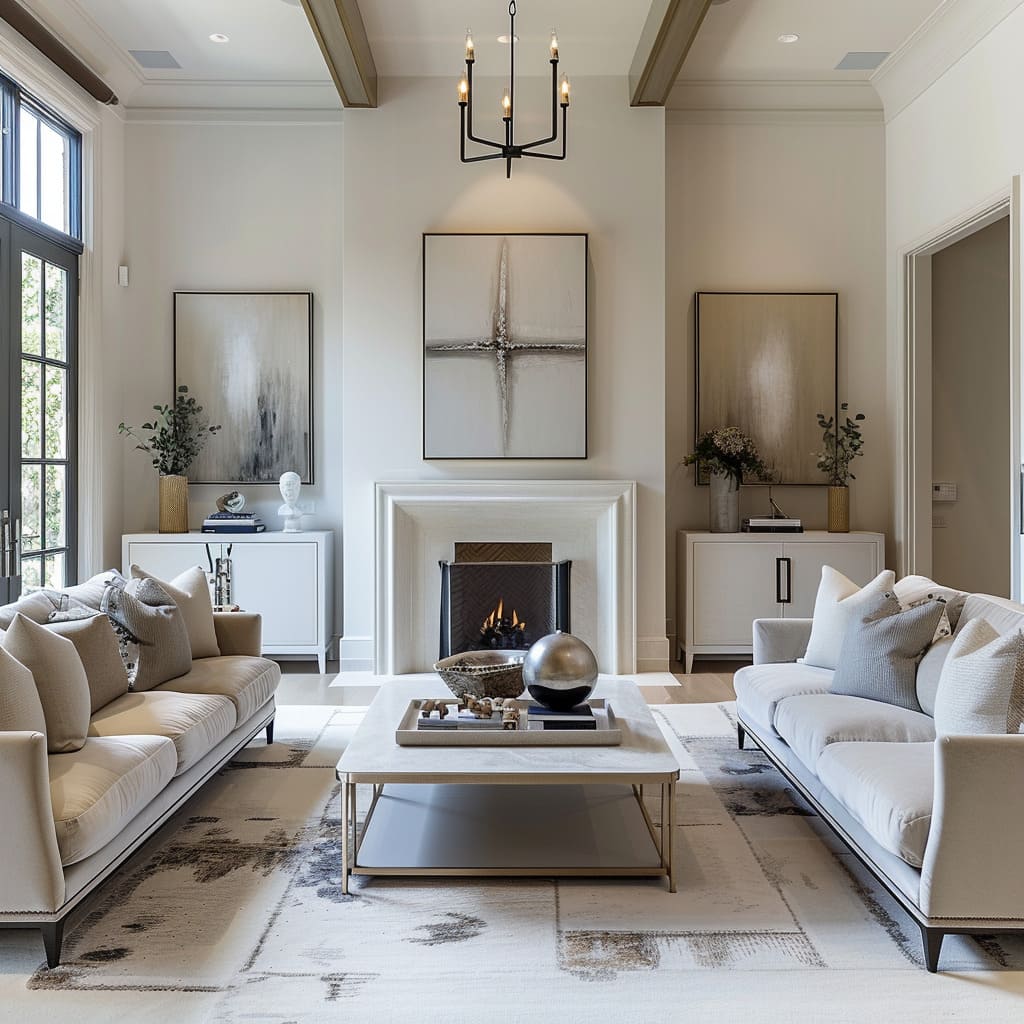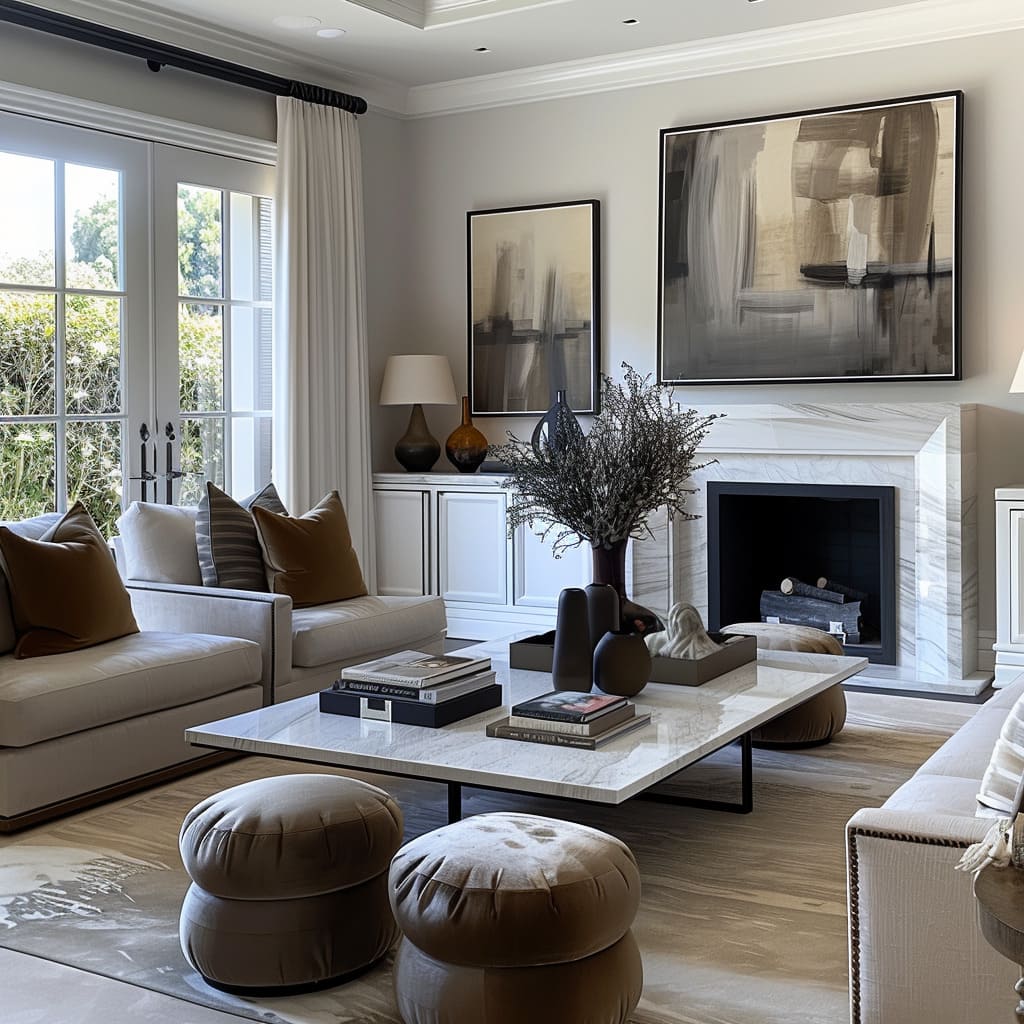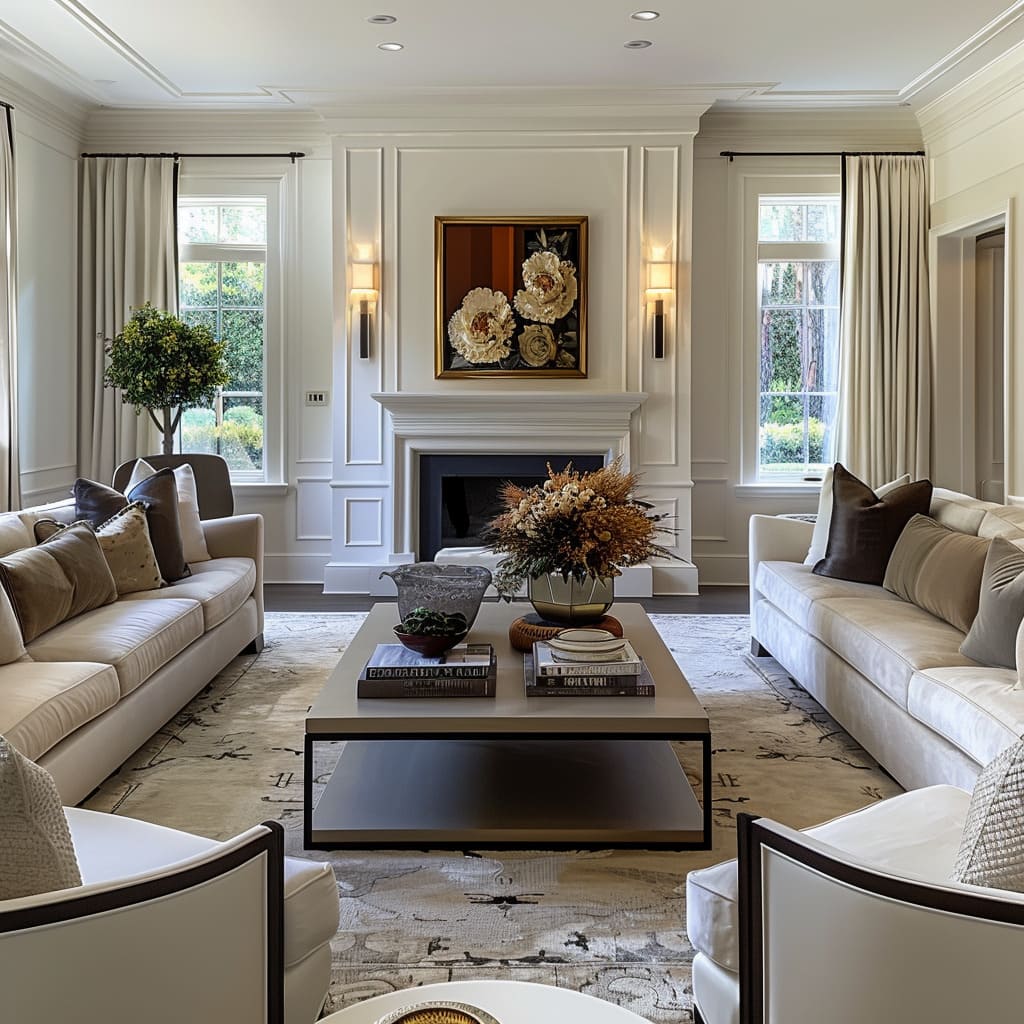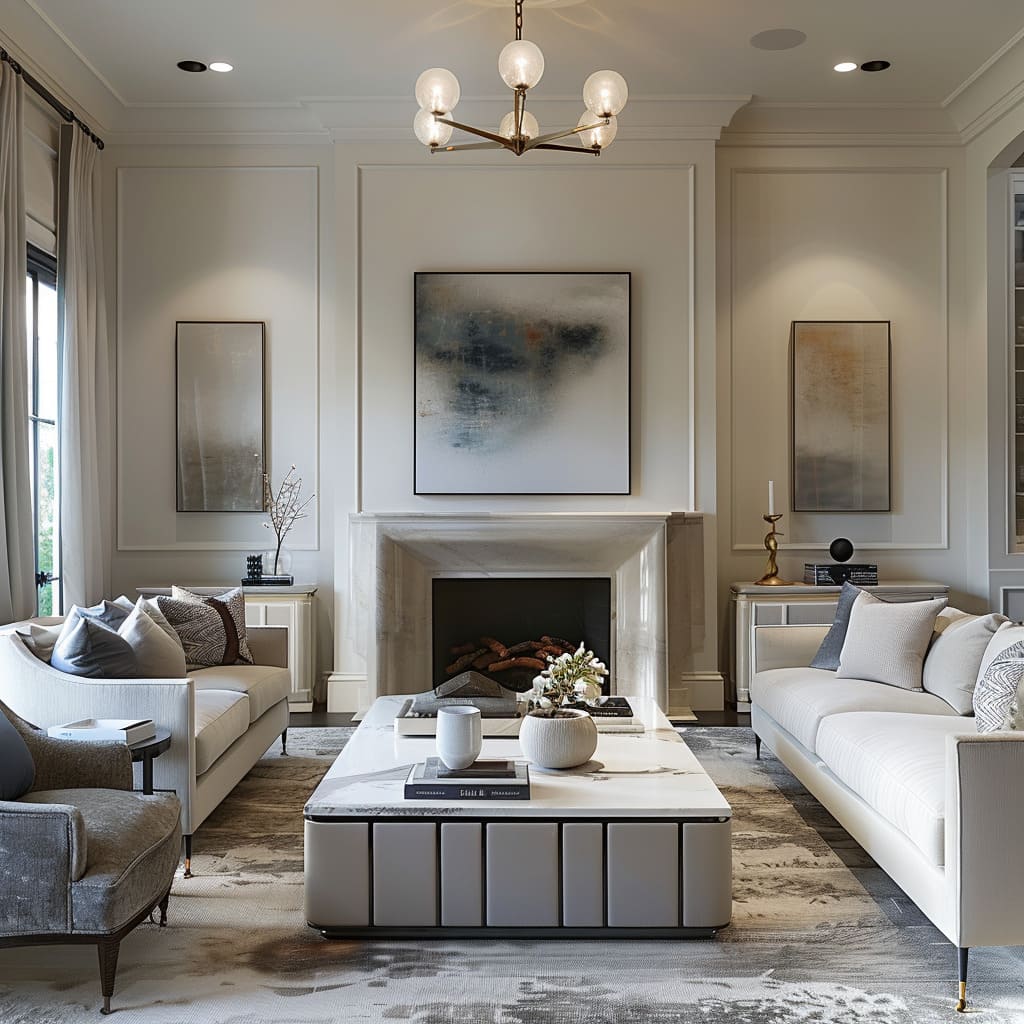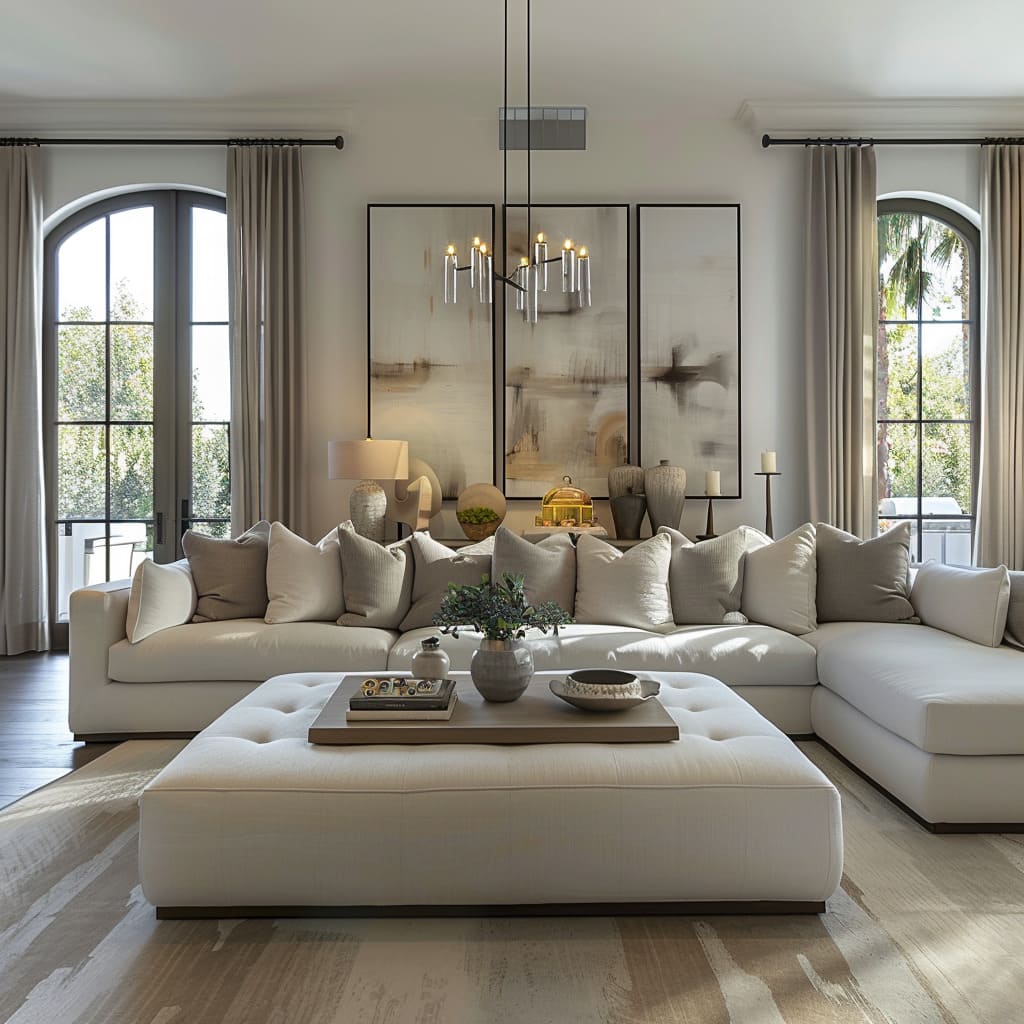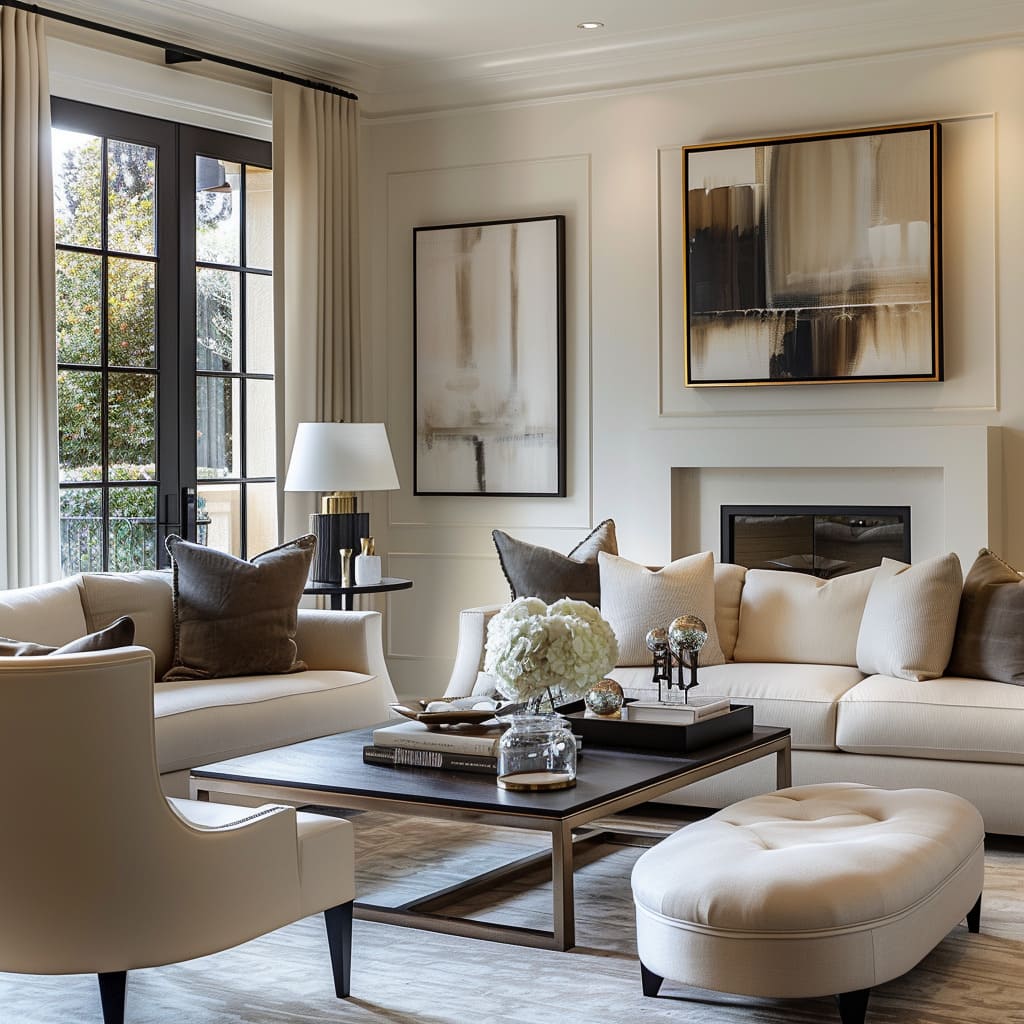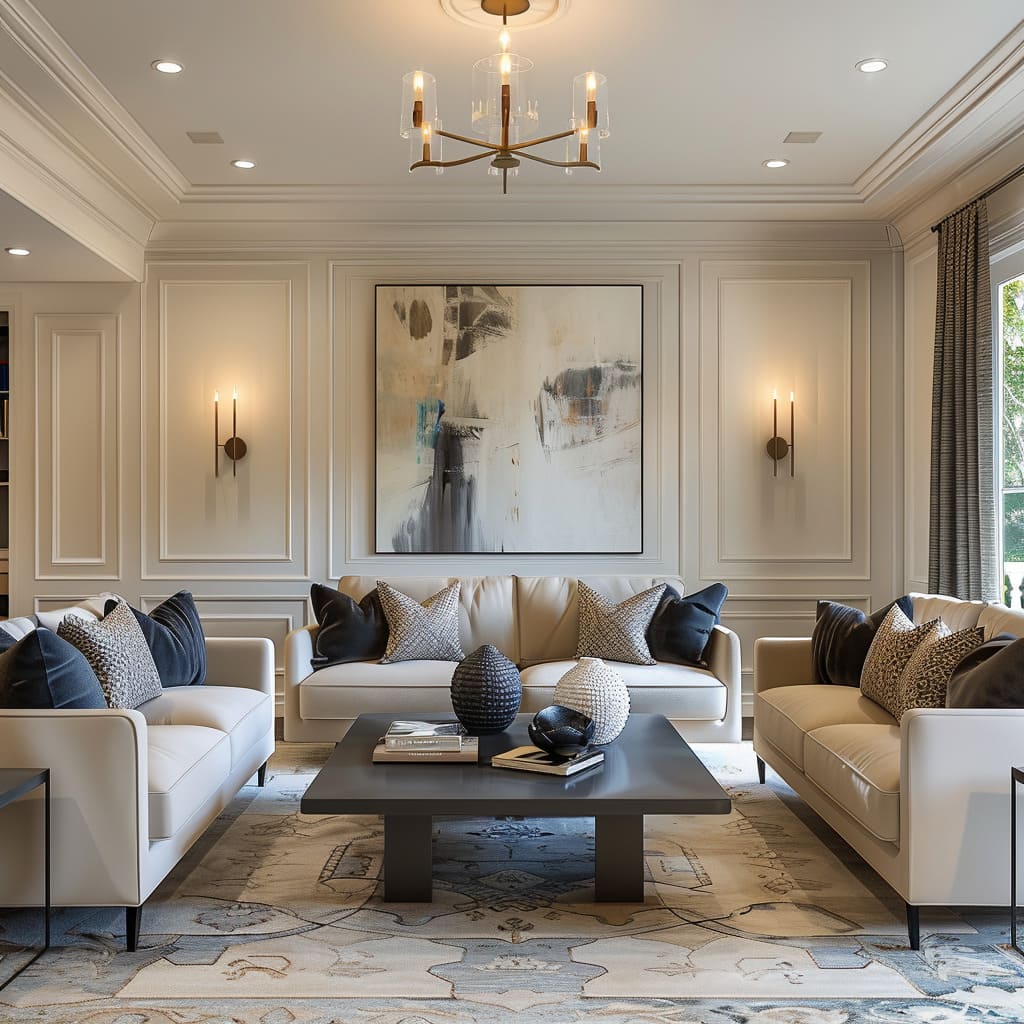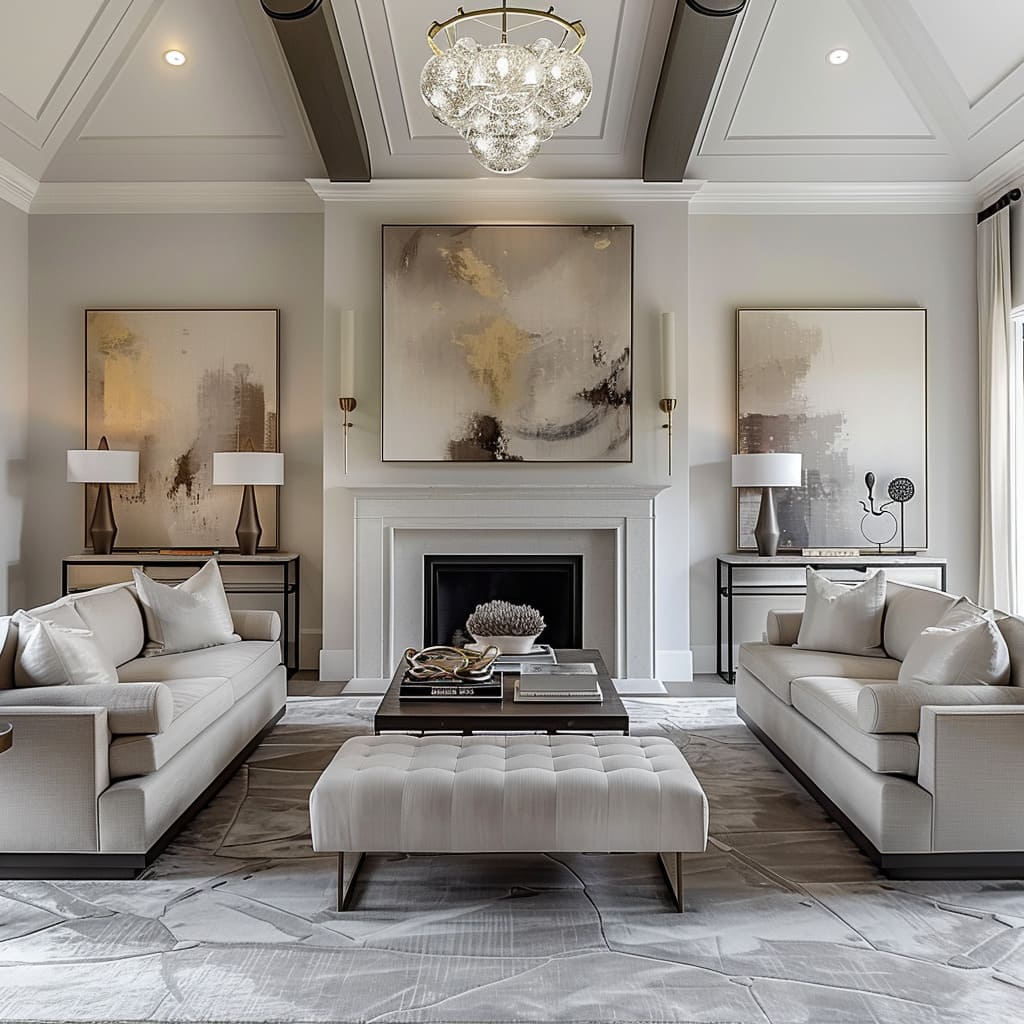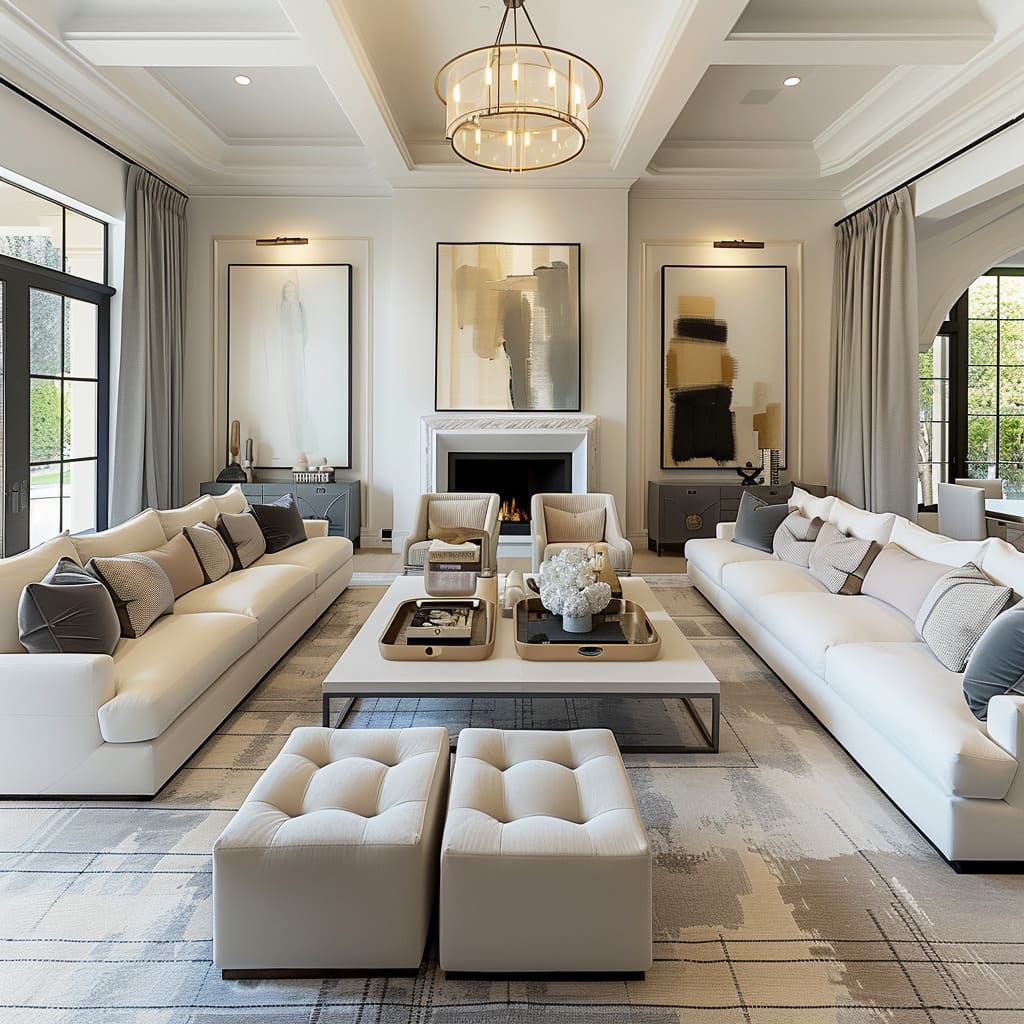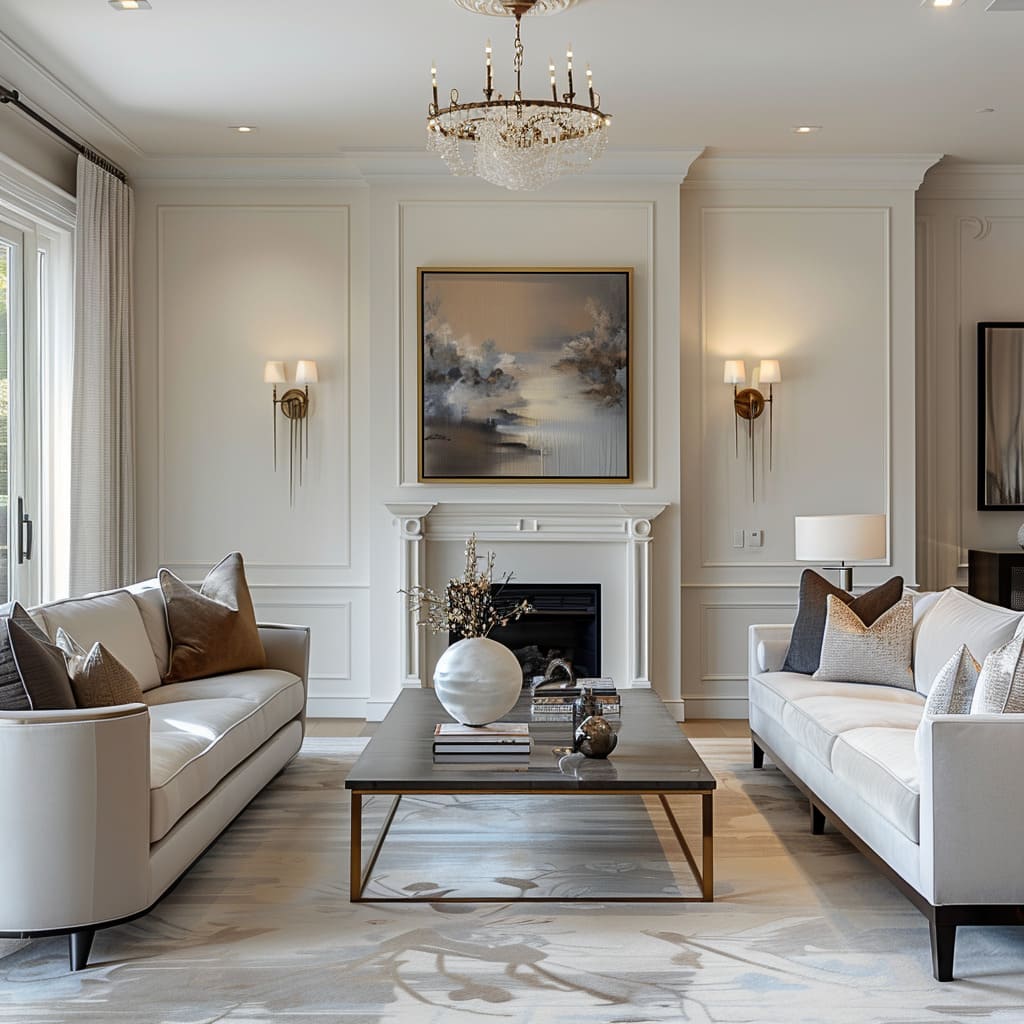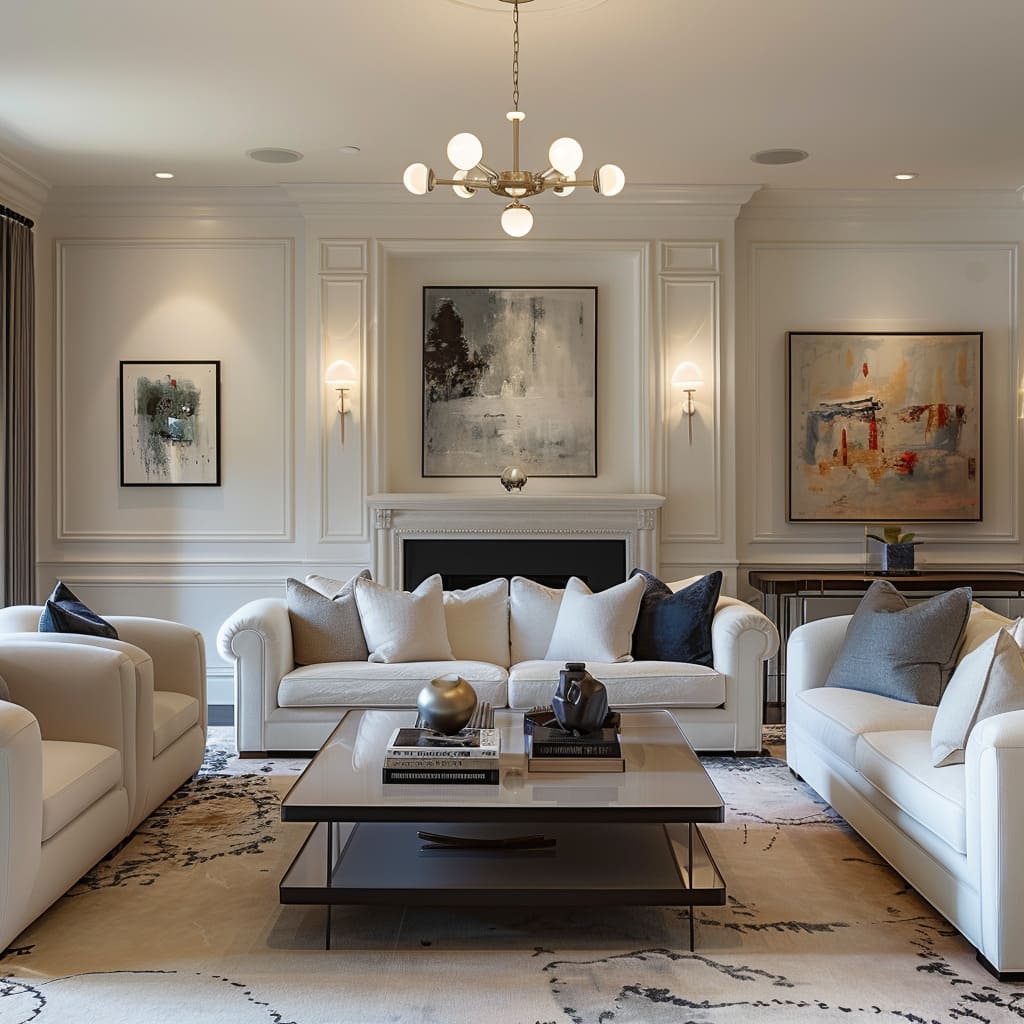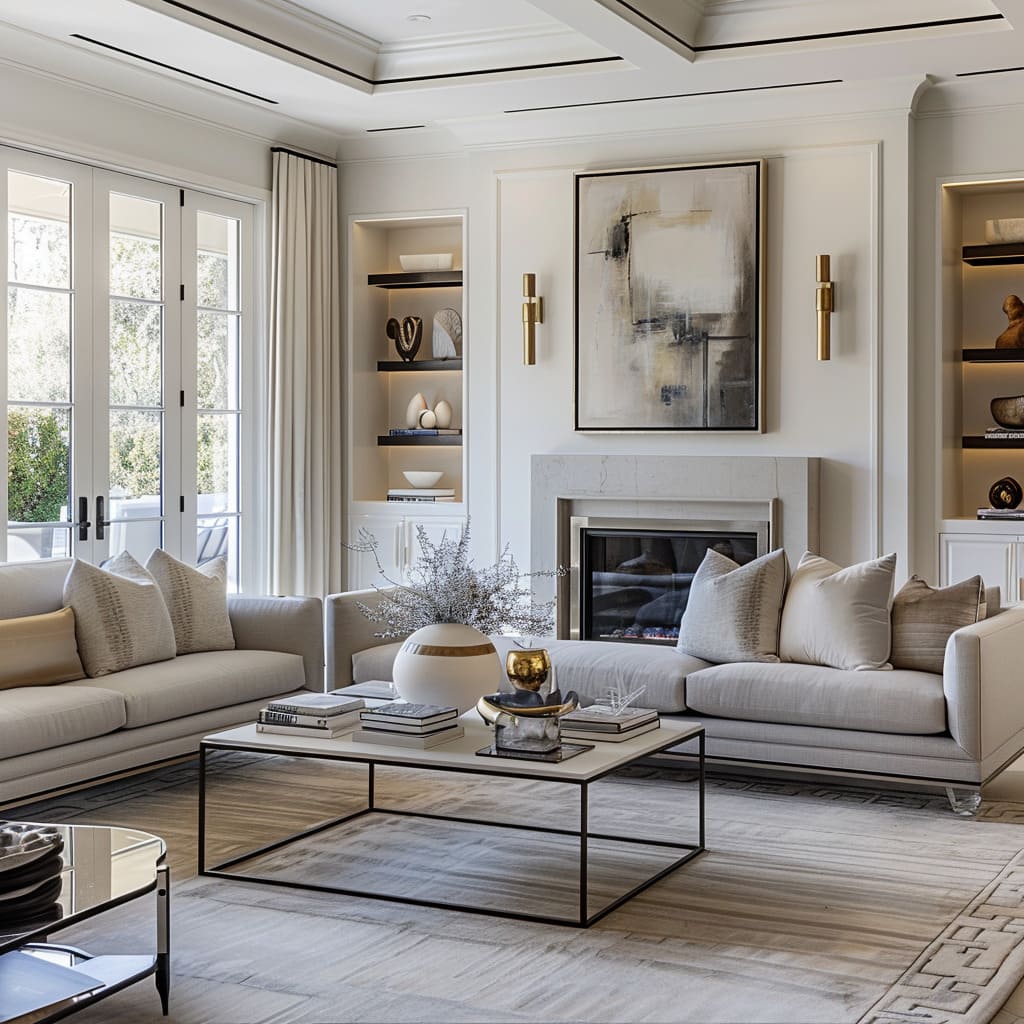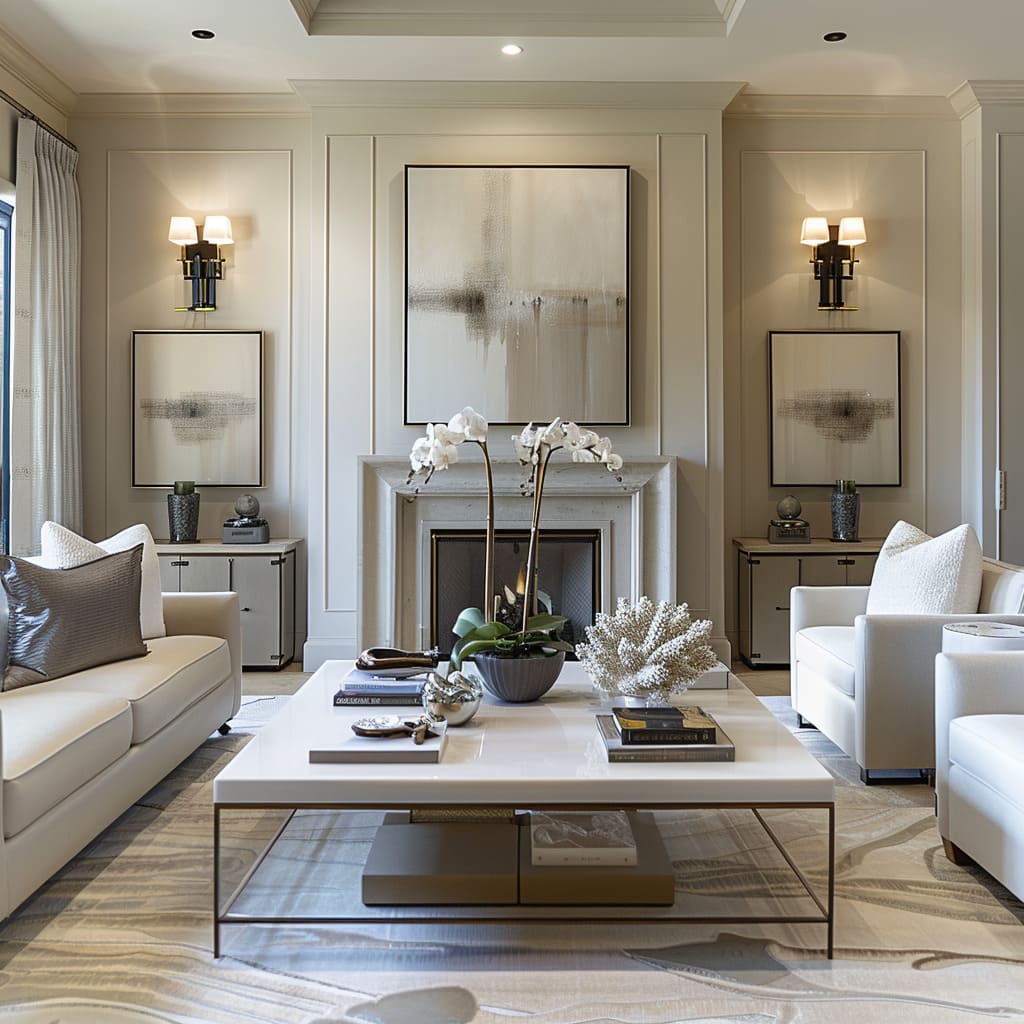In the captivating world of transitional interior design, where tradition gracefully meets modernity, color and texture emerge as the eloquent narrators, articulating the essence of space through subtlety and sophistication.
This exploration delves into the nuanced interplay of hues and materials, illuminating how they collectively forge an ambiance of understated luxury that speaks to both the tactile and visual senses.
As we journey through the realms of elevated neutrals, gentle contrasts, and the strategic blend of old and new, we uncover the meticulous craftsmanship that defines transitional design, a style that cherishes balance, harmony, and the thoughtful integration of elements to craft spaces that resonate with both history and contemporaneity.
Aesthetic and Style
Transitional interior design artfully bridges the gap between the time-honored beauty of classic aesthetics and the crisp lines of contemporary style, creating spaces that celebrate the best of both worlds. In this exploration of luxurious transitional design, we delve into the subtleties and sophisticated touches that make these interiors stand out.
Mix of Old and New
A deft interplay of eras is evident as antique pieces with storied pasts juxtapose with modern furniture, suggesting a timeline of design that spans generations. This curated look champions coherence over time, offering a dialogue between the vintage and the cutting-edge.
Classic Lines
The furniture and decor in these spaces boast classic lines, harking back to traditional forms. Yet, they are reimagined with a contemporary twist, demonstrating that simplicity and clean edges can coexist with the grace of classical design.
Tailored Silhouettes
Comfort meets custom design in upholstered items that boast tailored silhouettes. These pieces reject unnecessary frills, instead embracing the refined beauty of neatly trimmed edges and the luxurious feel of premium fabrics, cradling the body and the eye in equal measure.
Unassuming Elegance
There’s a whisper of elegance in these rooms — it doesn’t clamor for attention with loud colors or gaudy fixtures. Rather, it impresses subtly, with carefully chosen materials and an air of tranquility that pervades each meticulously crafted space.
Discreet Charm
The charm of these spaces is discreet; it doesn’t announce itself but is discovered in the quality and fit of the elements within. It’s found in the precision of a lamp’s placement, the gentle curve of a chair’s armrest, and the harmonious blend of textures and tones.
Selective Ornamentation
Ornaments are chosen with a discerning eye, each piece resonating with meaning and contributing to the narrative of the space. Whether it’s a painting with a hint of history or a sculpture that speaks to the homeowner’s journey, each detail is thoughtfully integrated.
Color and Texture
As we traverse the intersection of tradition and modernity, color and texture in transitional interior design serve as the silent narrators of a space’s story. They create an atmosphere that resonates with subtlety and sophistication.
The nuanced approach to these elements forms the essence of a room, where the aim is not to overpower but to complement. Here, we explore how the interplay of shades and surfaces brings life to the transitional style, embodying a quiet luxury that is as tactile as it is visual.
Elevated Neutrals
The foundation of the transitional palette is an evolved set of neutrals. These shades provide a backdrop that is anything but basic.
The neutral tones span a spectrum from warm ivory to rich taupe, lending a tranquil and sophisticated air to the space. They act not only as a canvas but also as a subtle player in the overall design narrative.
Gentle Contrasts
In these interiors, contrast is not about stark opposition but rather about gentle differentiation. The layering of similar hues, such as the cooler greys against warmer beiges, gives a depth that is both complex and harmonious.
This delicate balancing act of tones can be seen in the selection of textiles and finishes, creating a serene but engaging visual experience.
Transitional Flooring
The choice of flooring is a testament to the transitional design’s ability to blend epochs. Traditional materials like hardwood are given new life with contemporary laying patterns or finishes, such as the wide-plank floors with subtle washes of color that complement the furniture above them.
The rugs laid over these floors feature abstract designs that bridge the gap between old and new, providing comfort and style underfoot.
Structural and Spatial Composition
The foundational elements of a space—its architectural details and structural components—serve as the silent narrators of design. They dictate the story of the room, conveying history and directing flow.
Transitional interior design masterfully harmonizes these components, creating environments that feel both established and adaptable. Here we explore how these structural elements work in concert to establish a space’s character and rhythm.
Architectural Details
These are the brushstrokes of history on a contemporary canvas. Wainscoting adds visual rhythm to walls, while crown moldings frame the ceiling, providing a classic contour that compliments the modernity of the furniture.
Built-in cabinetry merges seamlessly with the architecture, offering smart storage solutions that maintain the aesthetic flow. These details, as seen in the rooms you’ve provided, bring a sense of permanence and heritage.
Symmetry and Balance
The human eye is drawn to symmetry, and in these designs, it is used to create a sense of equilibrium and calm. Furniture is often mirrored on either side of a central point, like a fireplace or a statement artwork, as in the living rooms shown.
This arrangement fosters an orderly, uncluttered environment, where each piece of furniture and decor seems intentional and precise.
Attention to Scale
Proportion is pivotal in transitional design. Large rooms are furnished with substantial pieces that anchor the space without dominating it.
In smaller spaces, furnishings are scaled down to ensure that the room feels generous and unimpeded. The choice of furniture in relation to the room’s scale makes the space feel bespoke and tailored.
Thoughtful Proportions
The interplay between different elements is carefully calibrated. There’s a visual hierarchy where larger pieces are balanced by smaller, more delicate objects.
The spaciousness of seating is offset by slender, elegant tables and lamps. The artwork is proportioned to the wall space, creating focal points that harmonize with their surroundings.
Elegant Ceiling Treatments
The design does not neglect the upper planes of the space. Coffered and tray ceilings draw the eye upward, expanding the room’s dimensions vertically and adding a layer of sophistication.
Rhythmic Repetition
There’s a subtle repetition in the design elements, like the repeated use of rectangular shapes or the rhythm of lamp pairs, that creates a sense of continuity and flow throughout the space.
Visual Weight Distribution
A balanced distribution of visual weight across the room ensures stability in design. For instance, a heavy coffee table is balanced by a lighter rug or a solid-colored ottoman paired with patterned curtains.
Strategic Use of Negative Space
Negative space is as important as the objects that occupy a room. It’s the open areas around and between the elements of a room that provide breathing room and help to highlight the structure and the furniture.
Transitional interior design artfully orchestrates a symphony of design elements, marrying the enduring elegance of classical aesthetics with the crisp, clean lines of modernity. Through a sophisticated palette of elevated neutrals, the strategic interplay of color and texture, and a harmonious blend of architectural details, this design philosophy celebrates the beauty of balance and refined simplicity.
The thoughtful juxtaposition of antique charm with contemporary flair, coupled with a keen attention to scale, symmetry, and proportion, culminates in spaces that exude a discreet yet undeniable luxury. In these meticulously curated environments, every element, from the subtle ornamentation to the strategic use of negative space, contributes to a narrative of elegance and style, embodying a luxurious tranquility that is as inviting as it is timeless.


